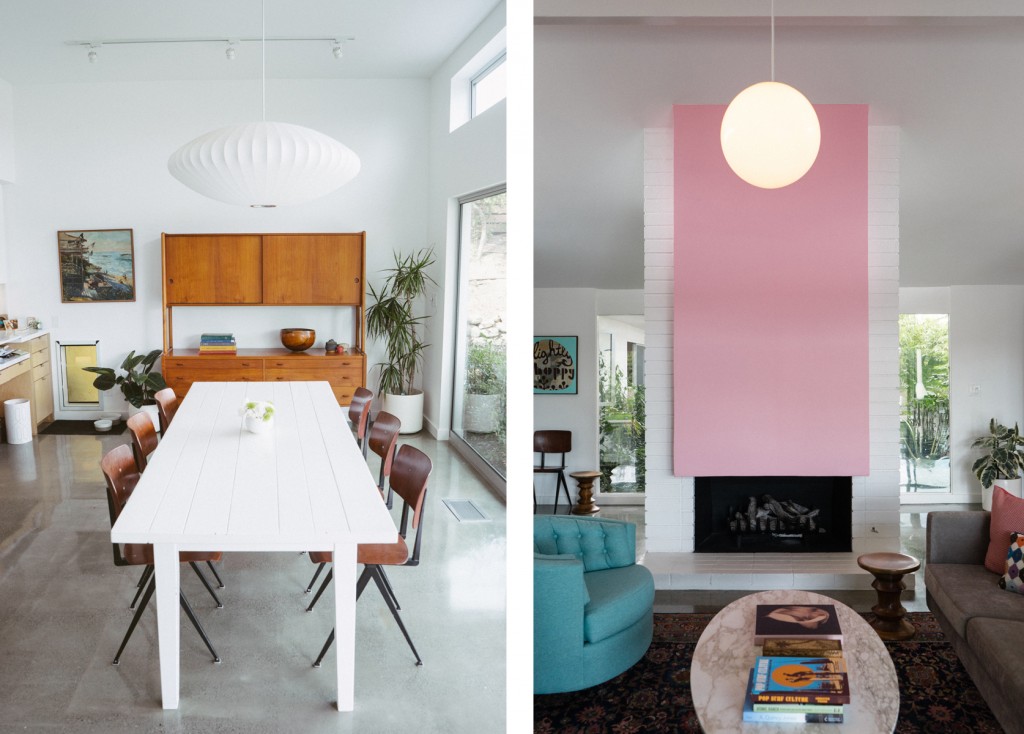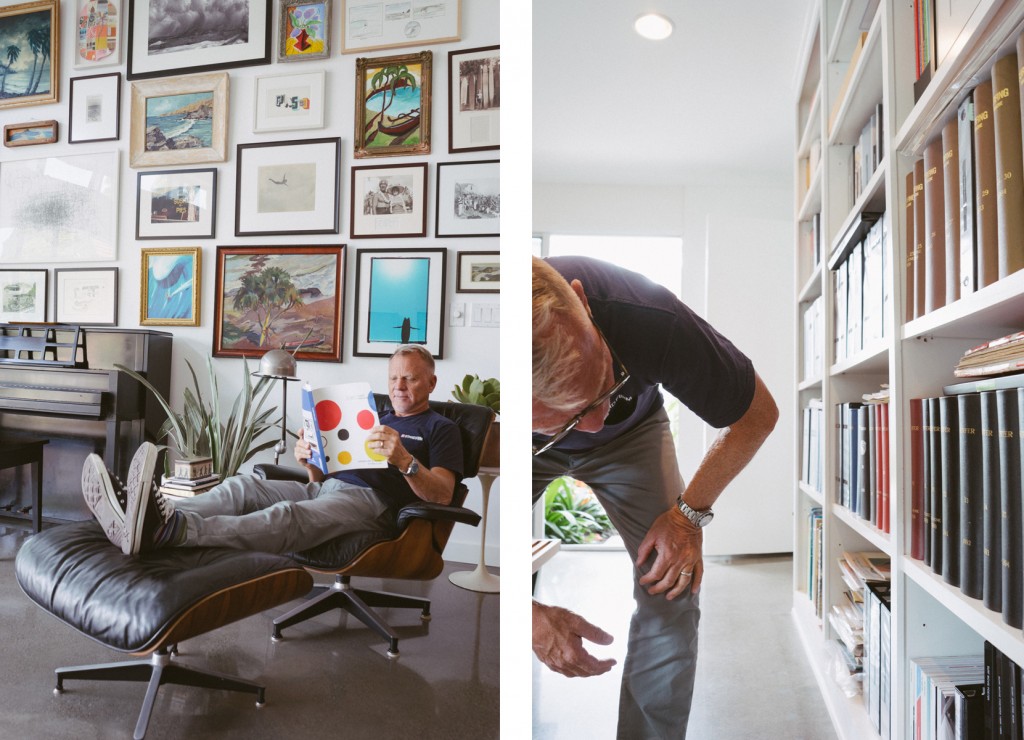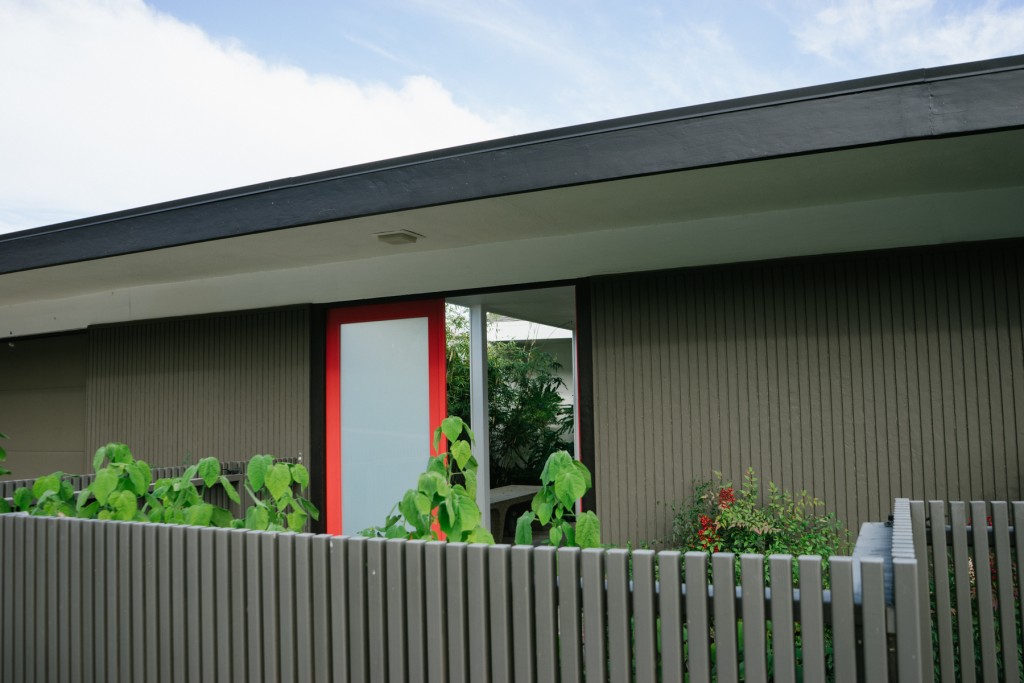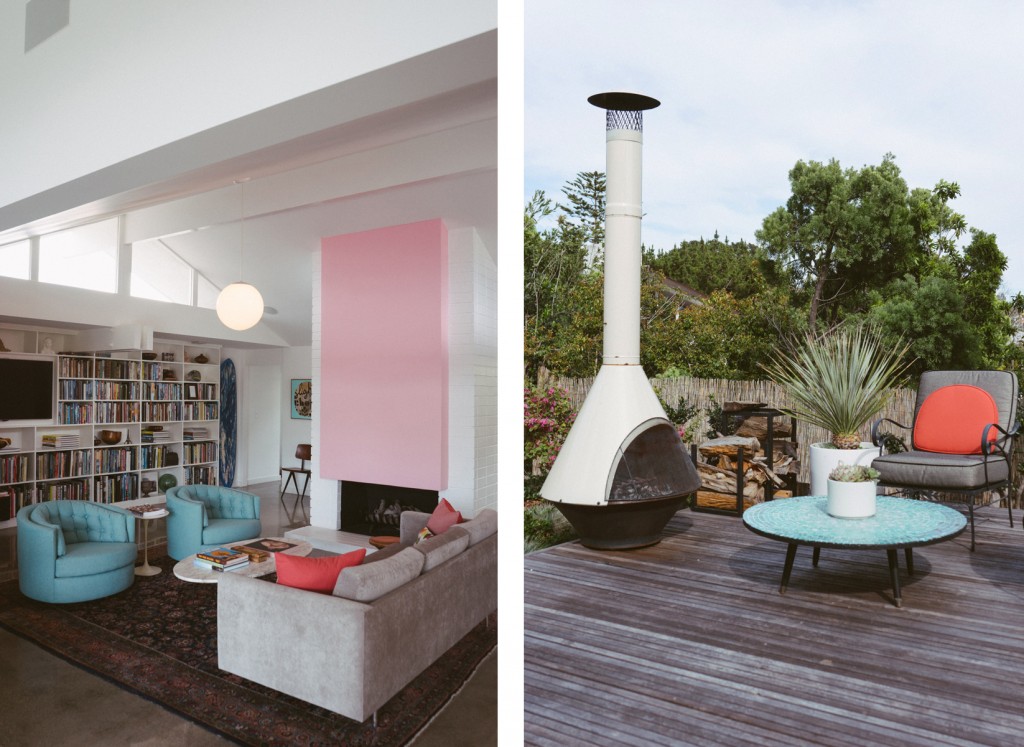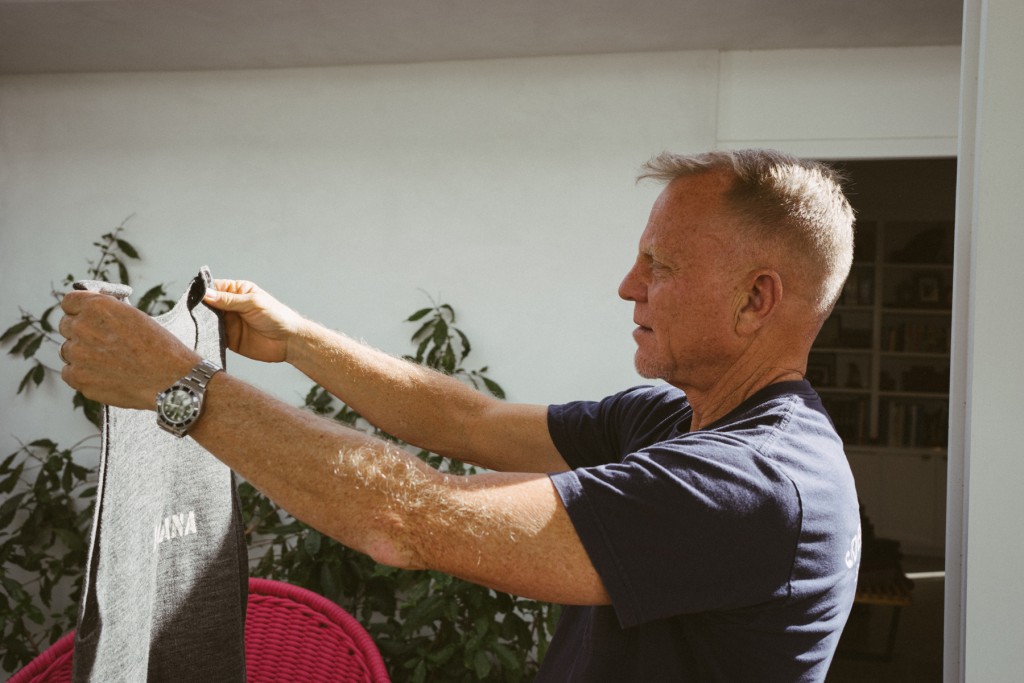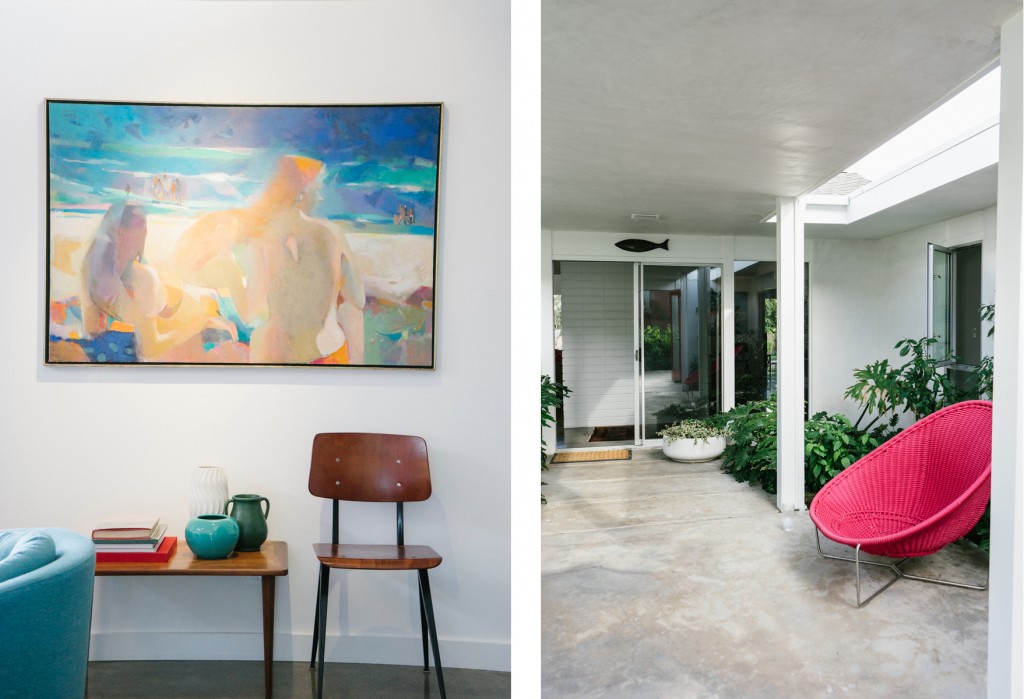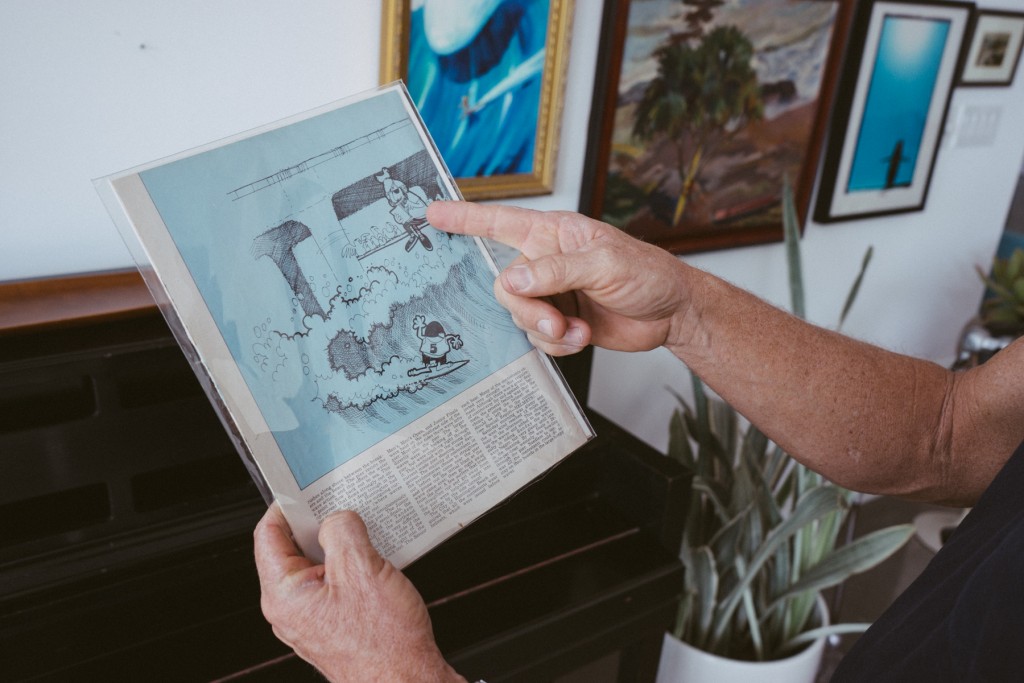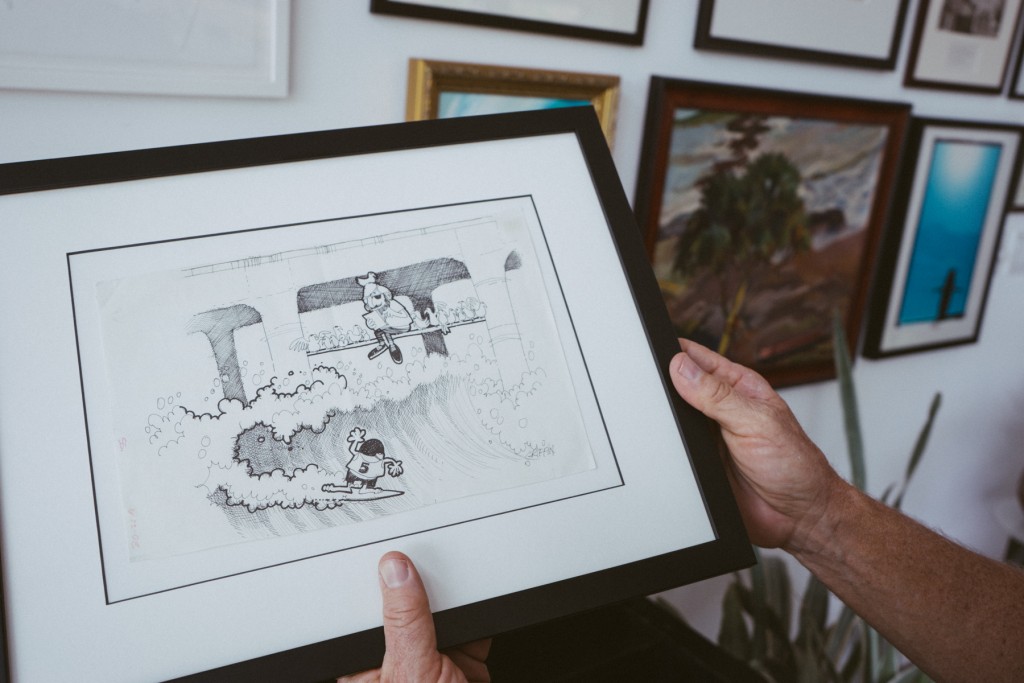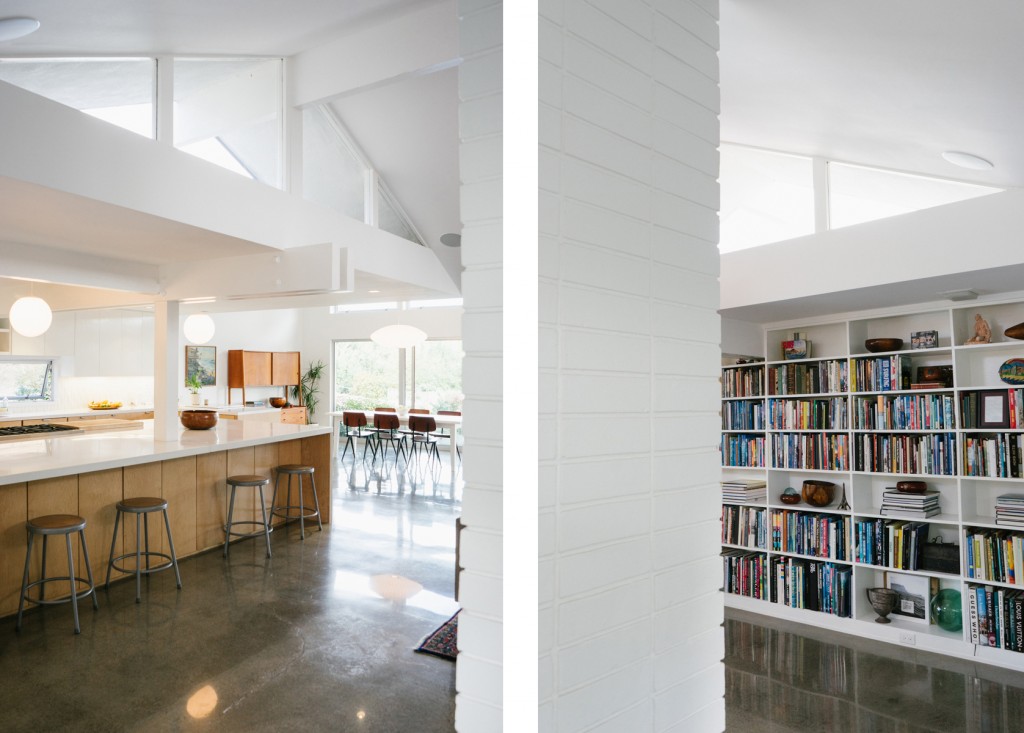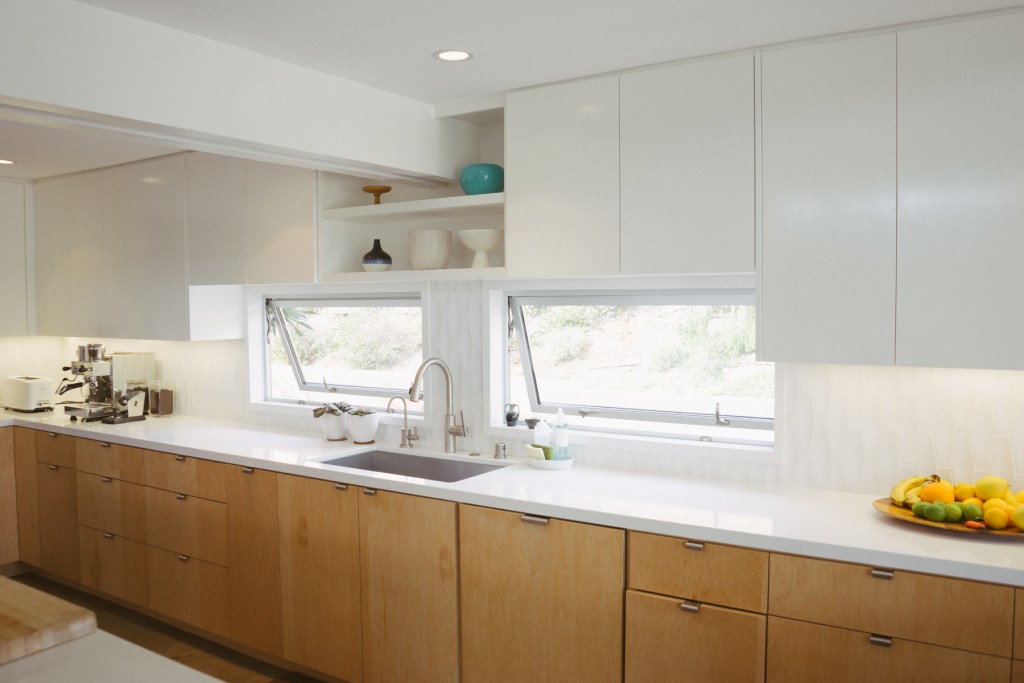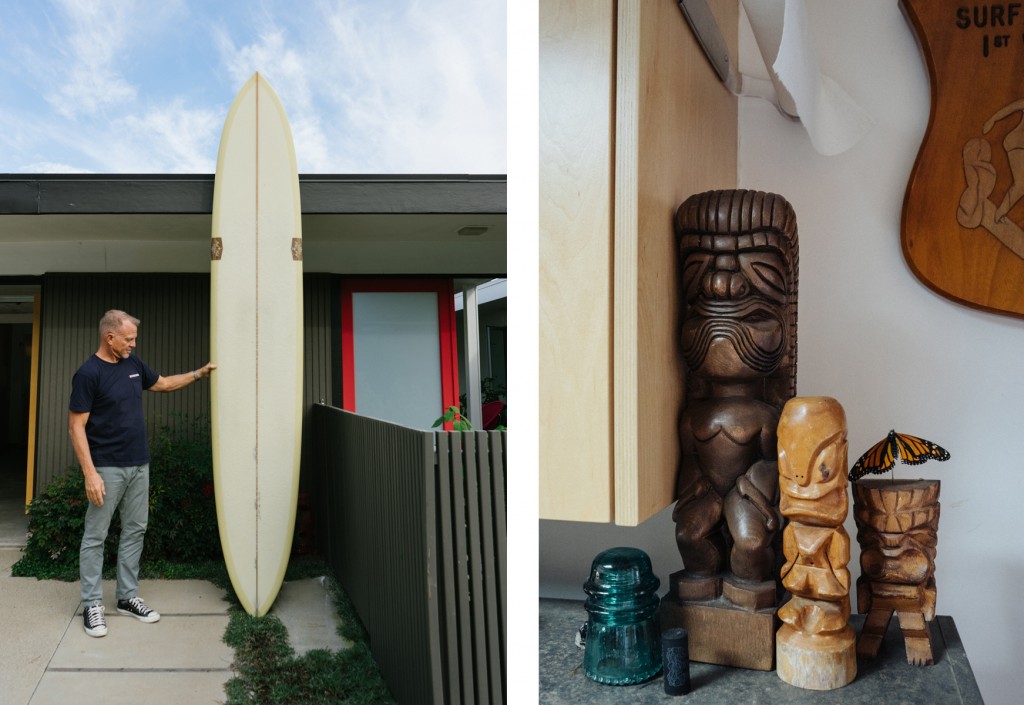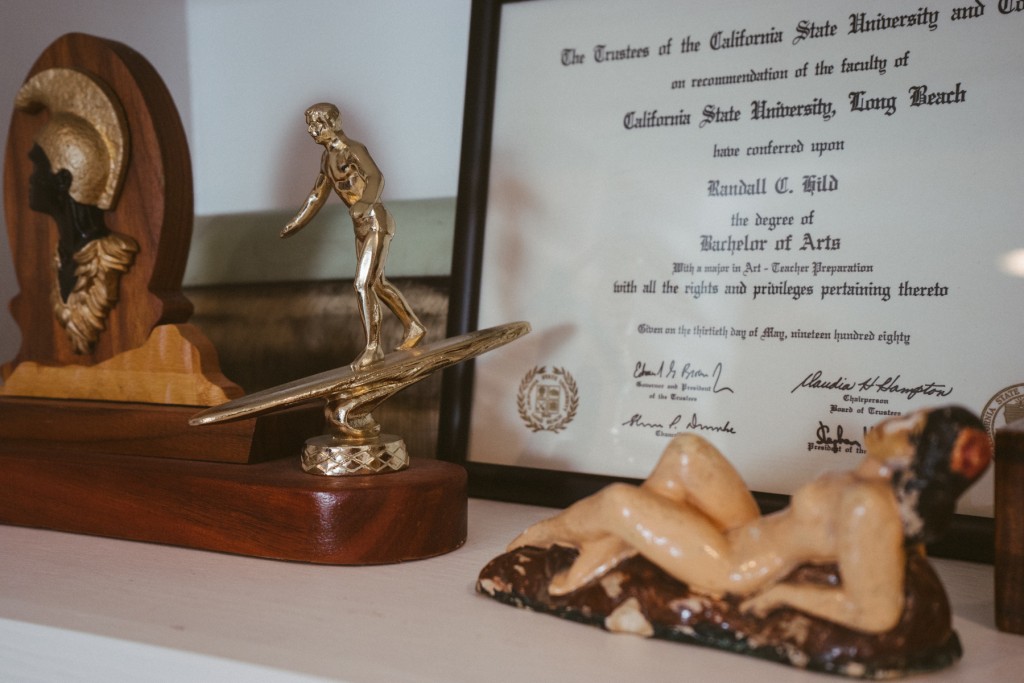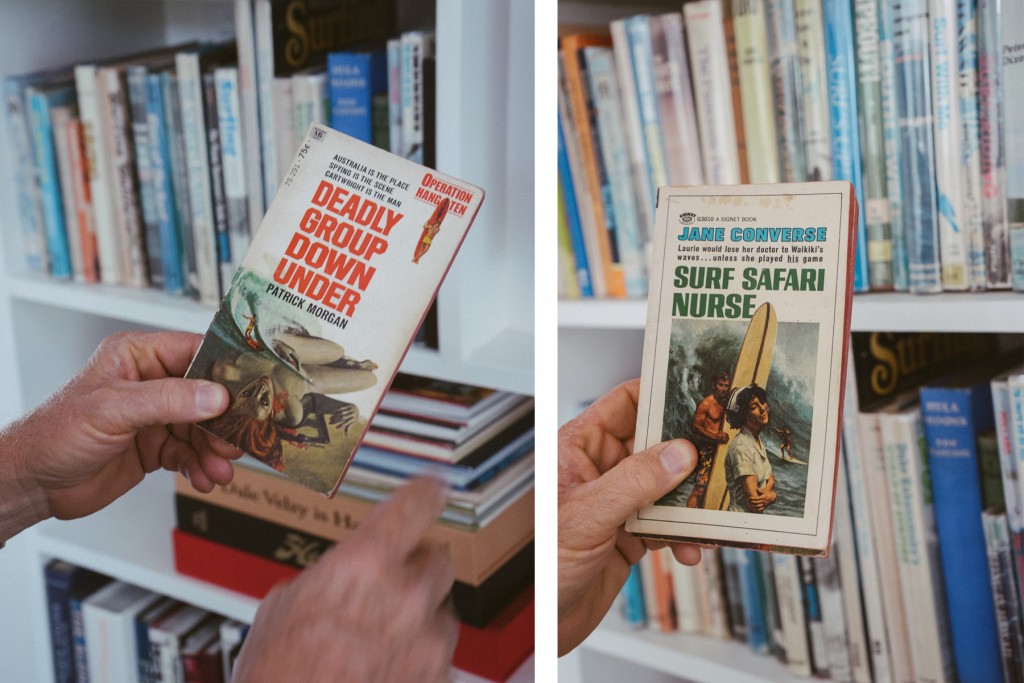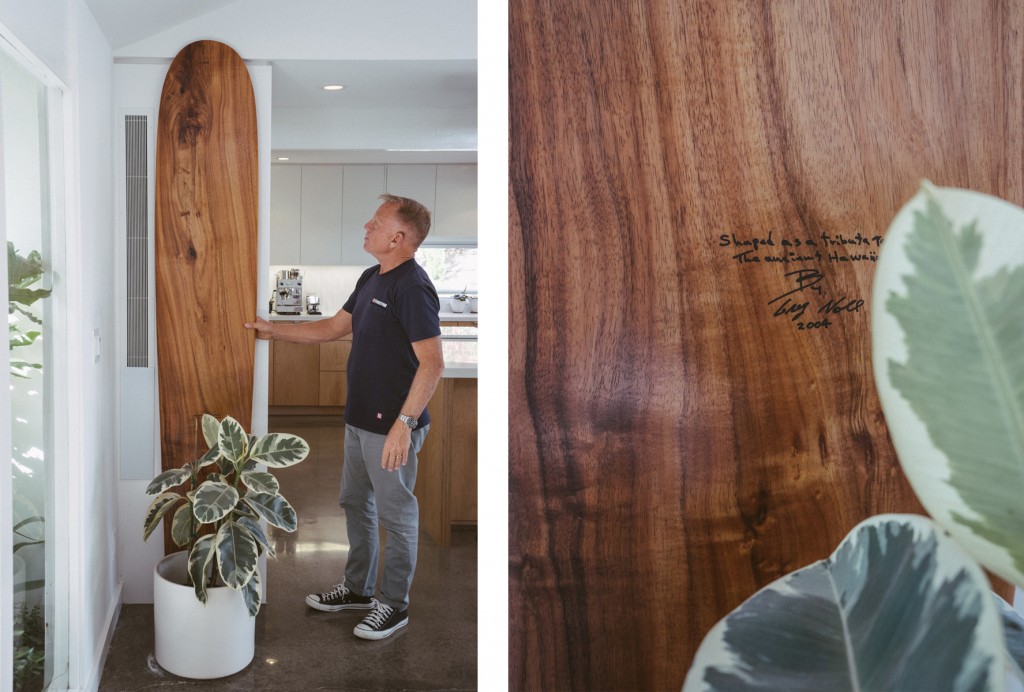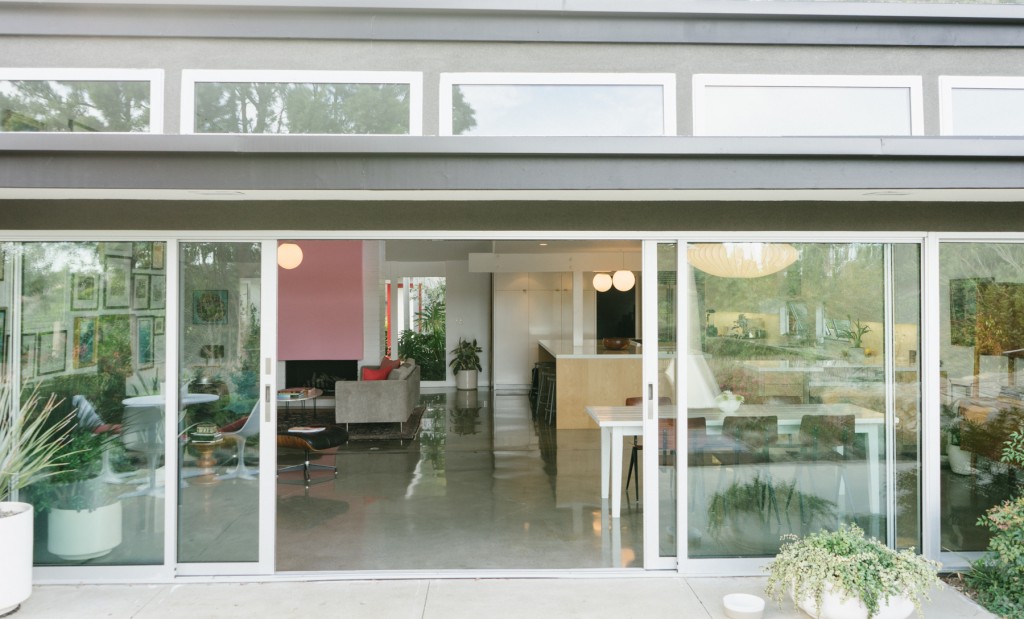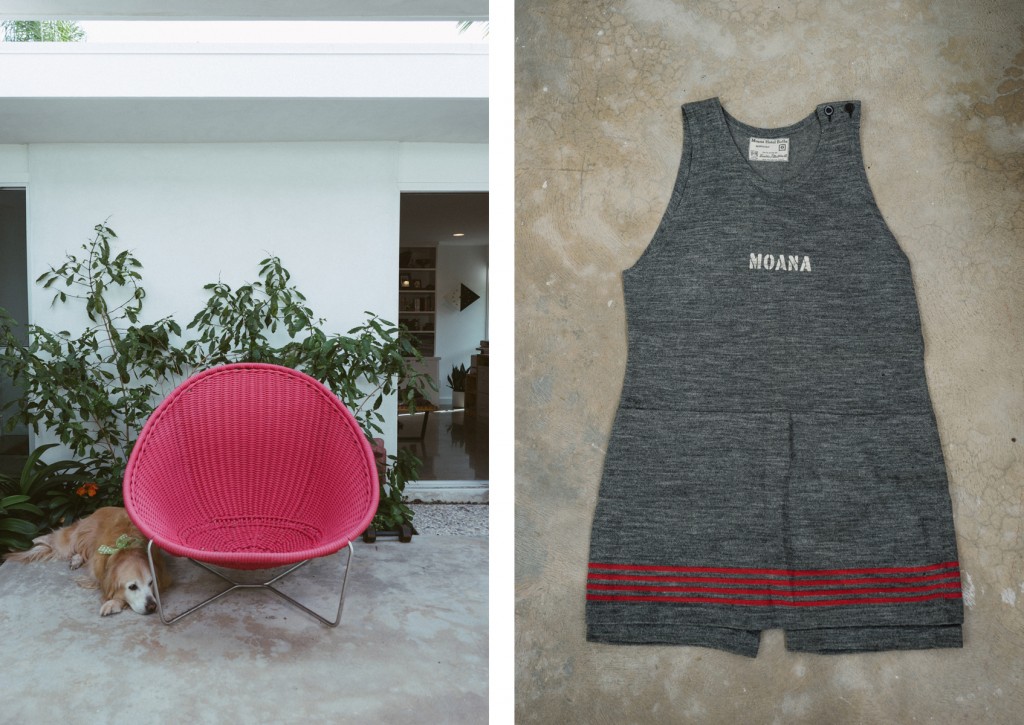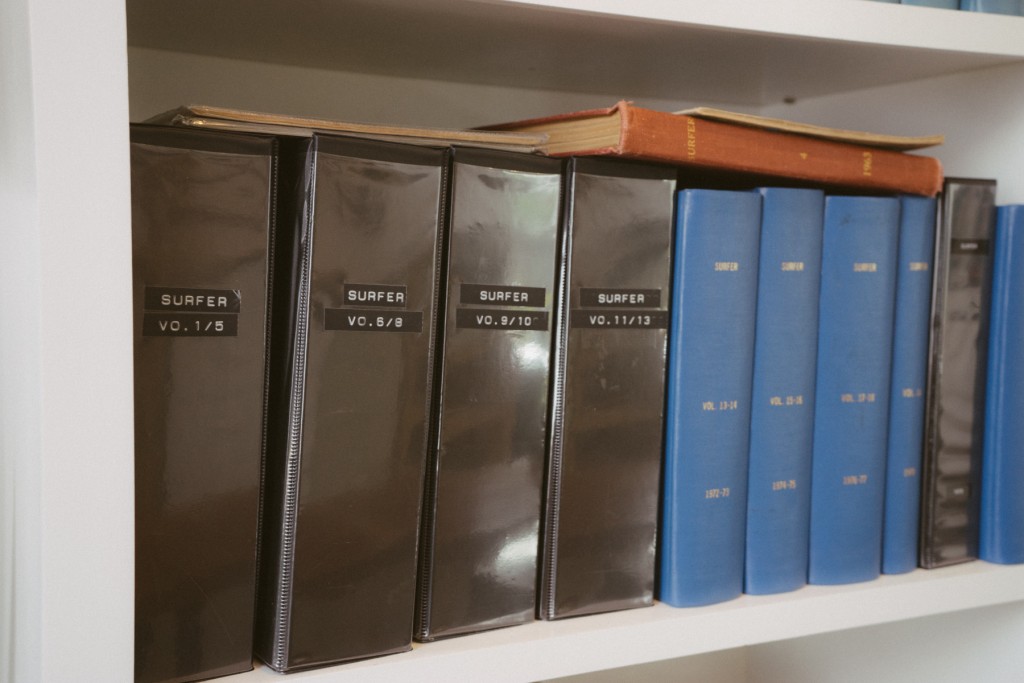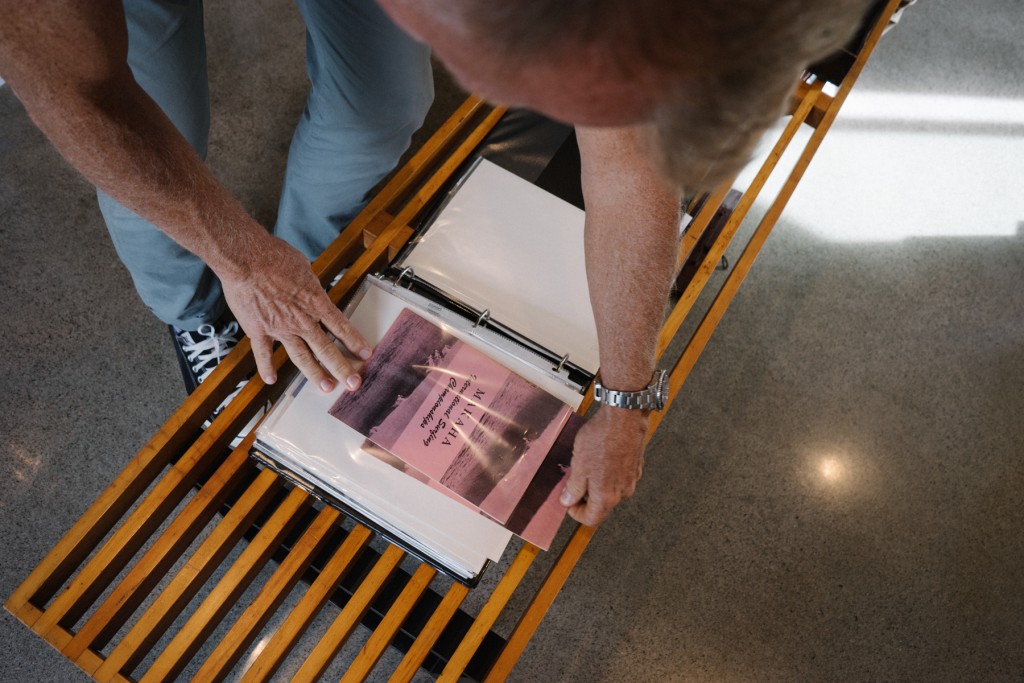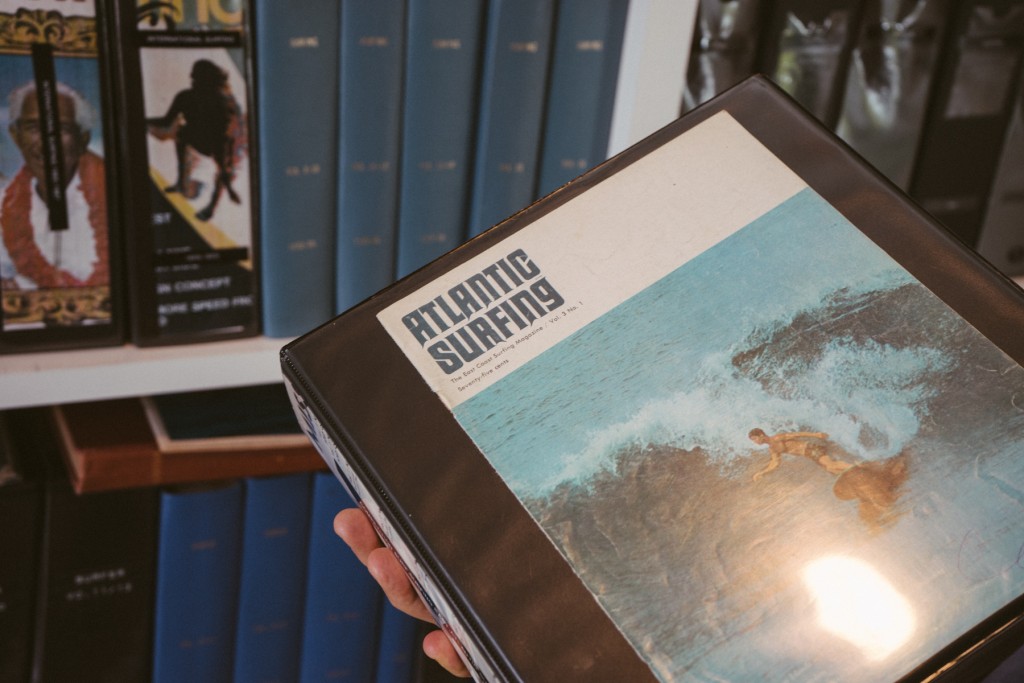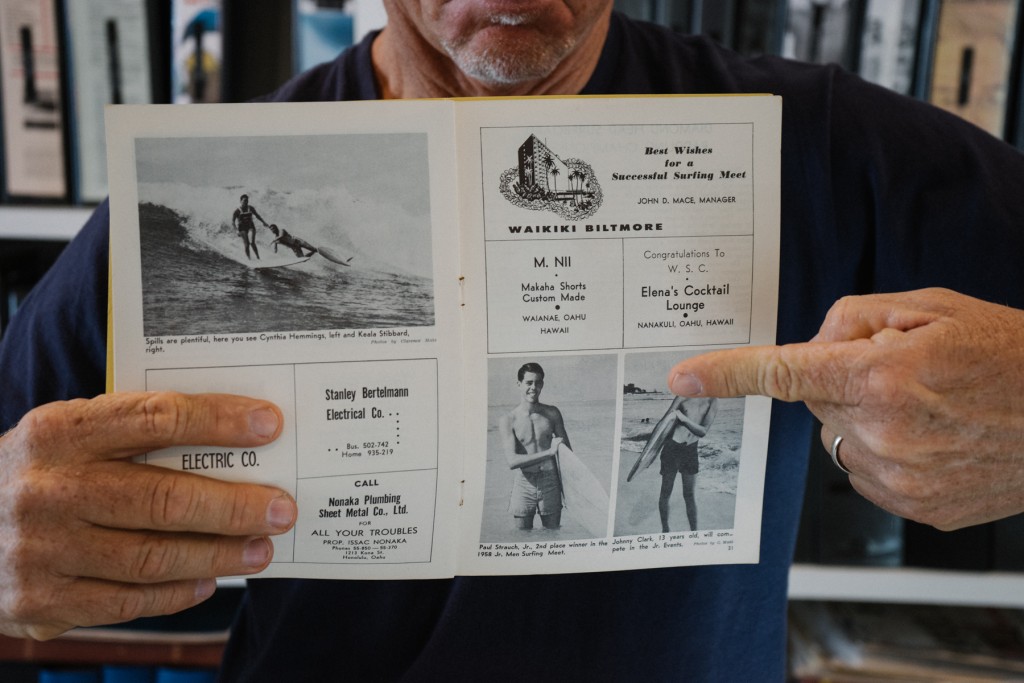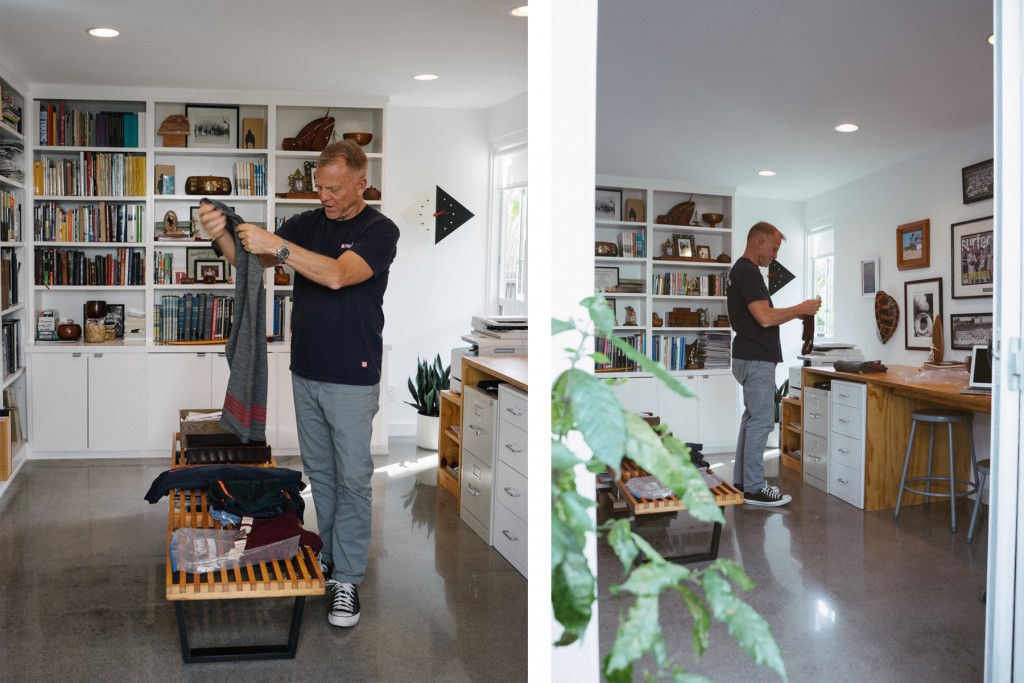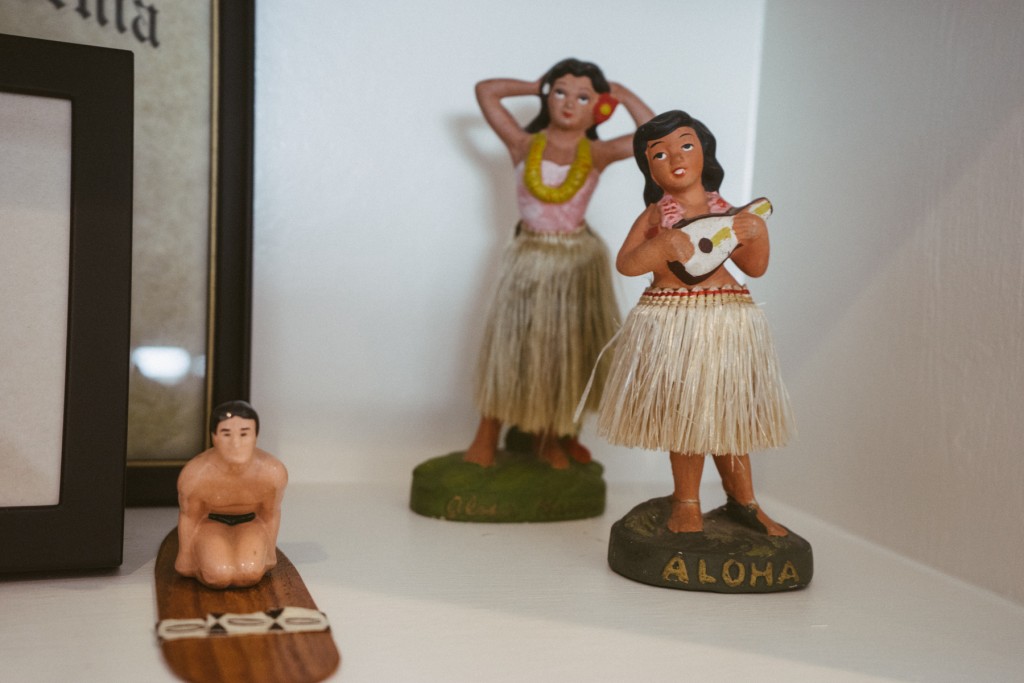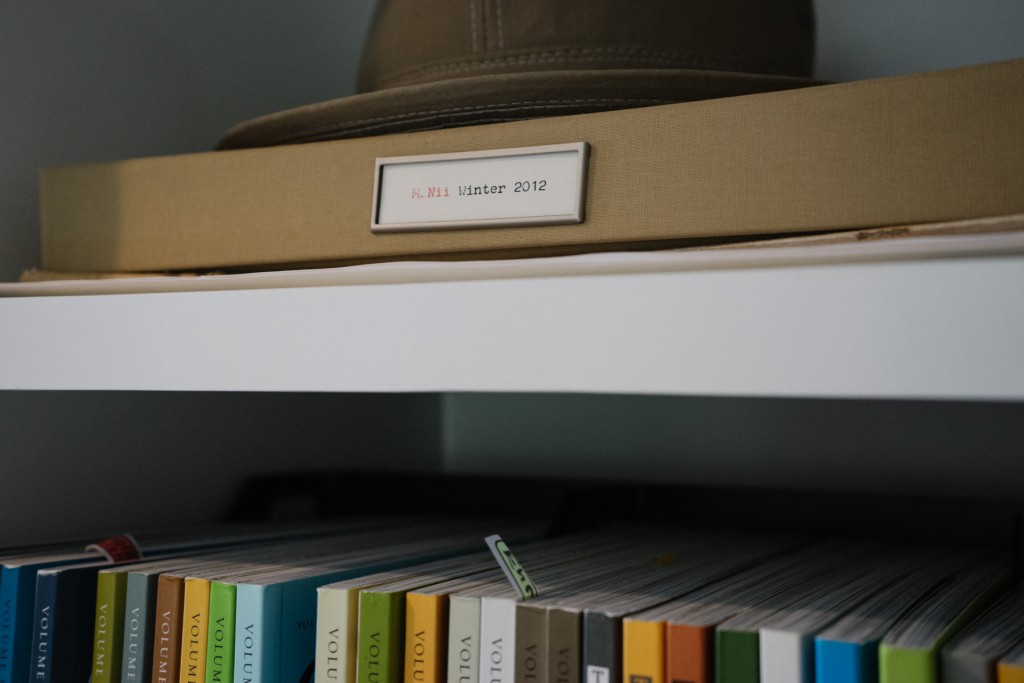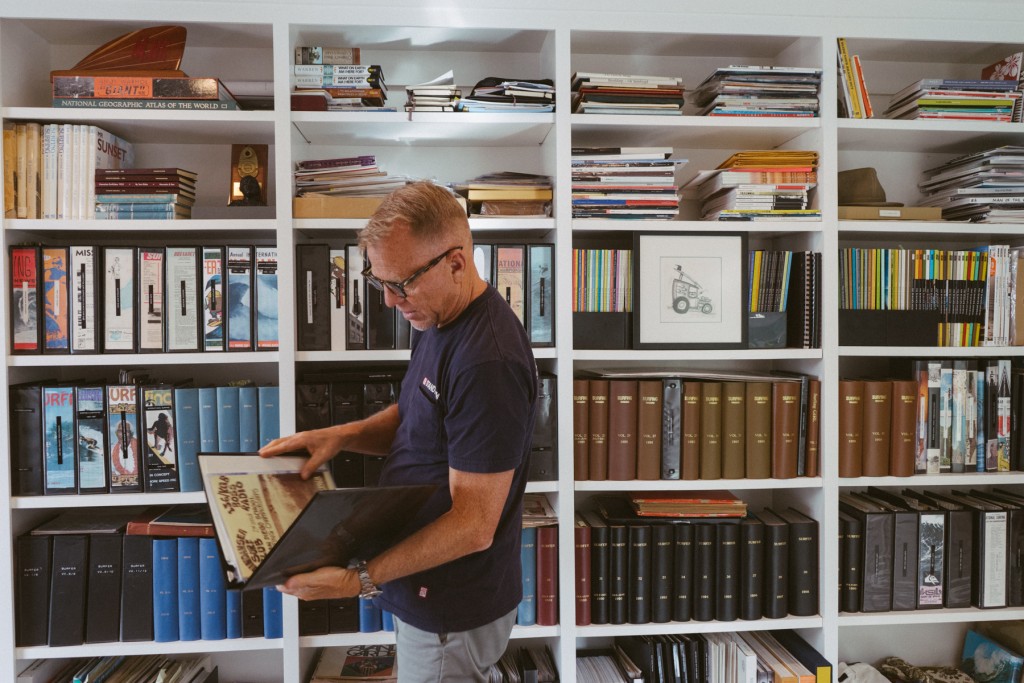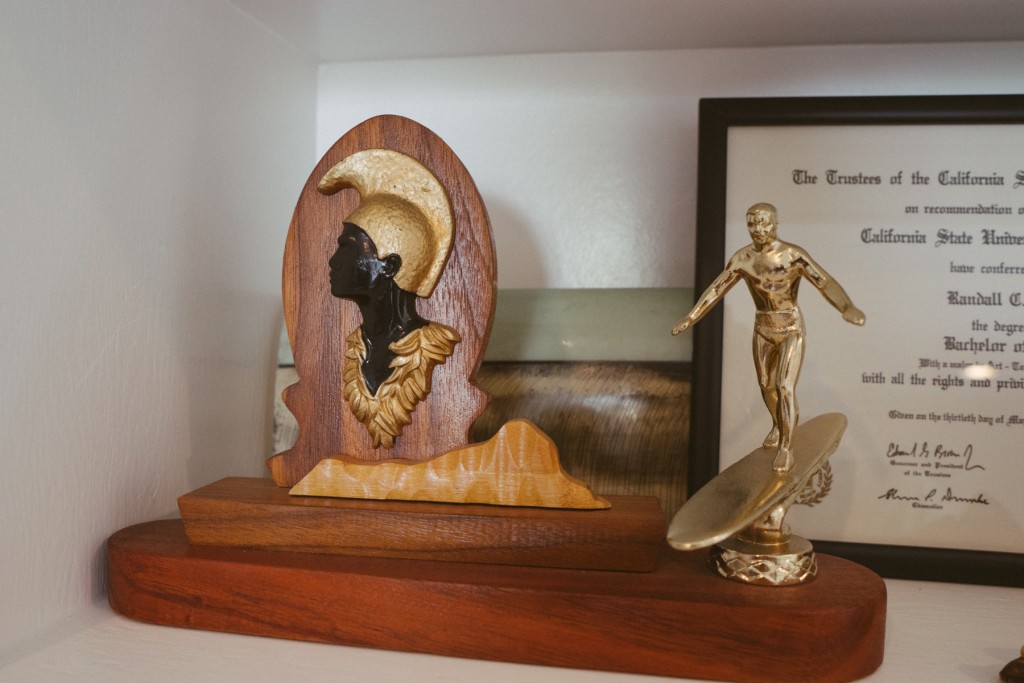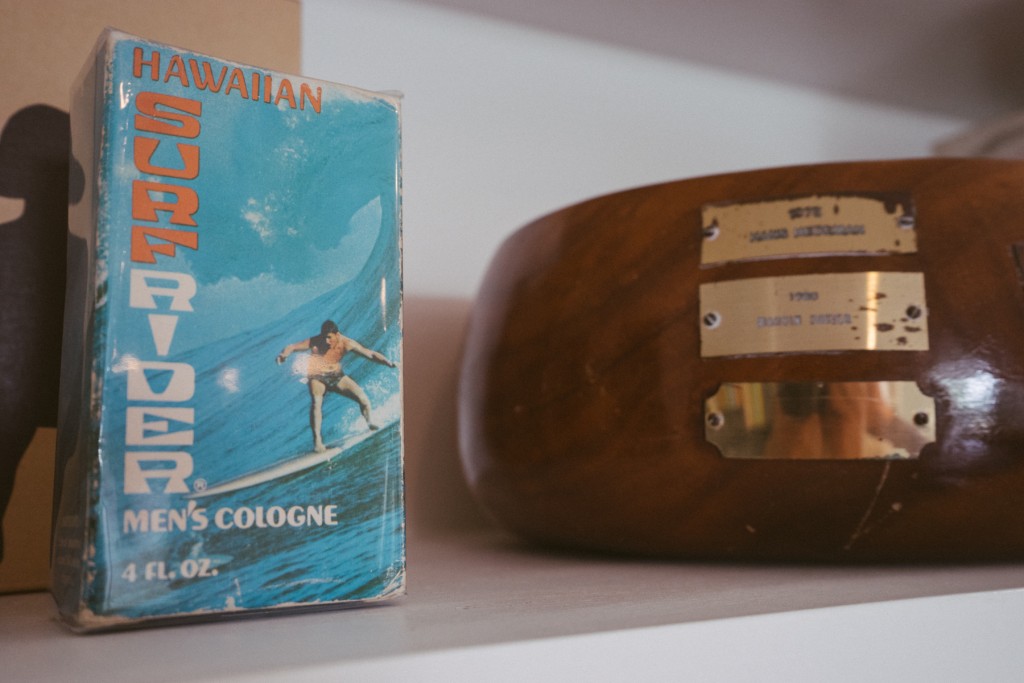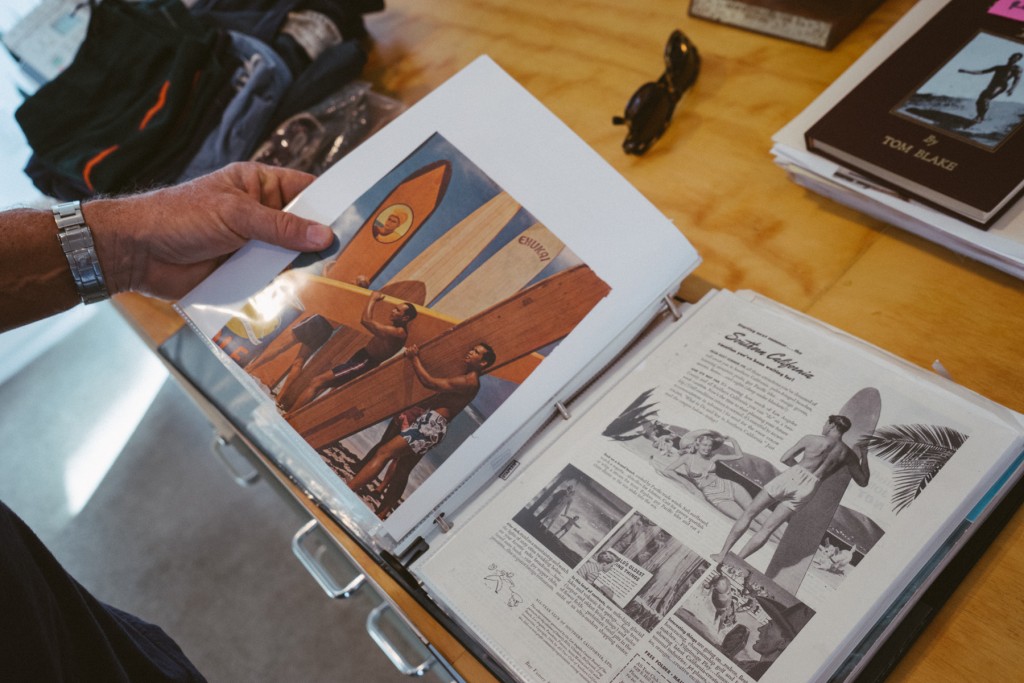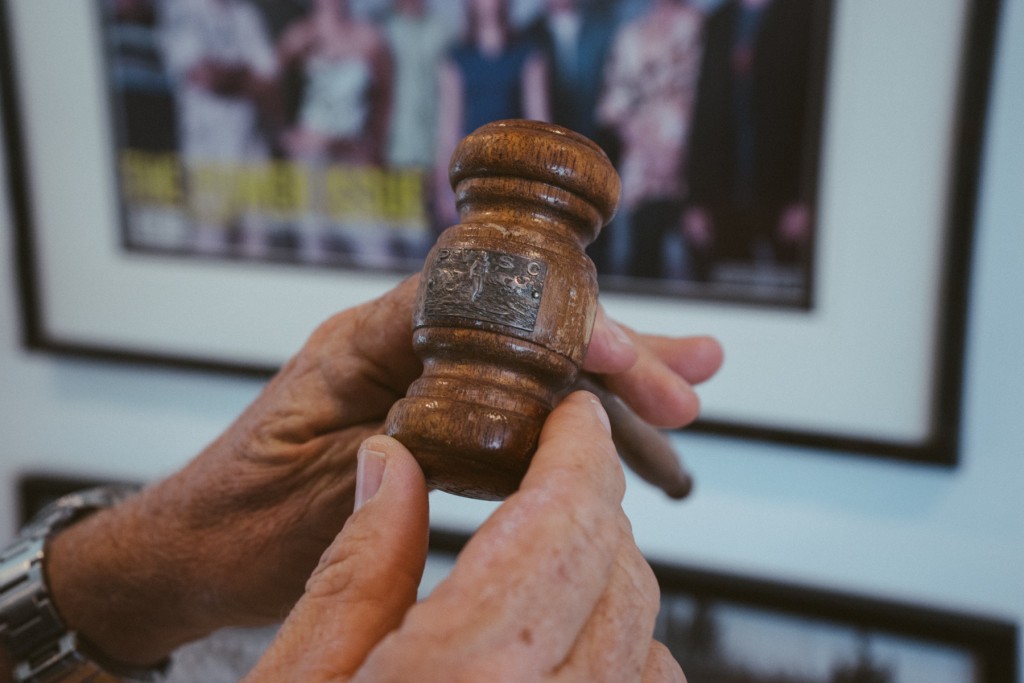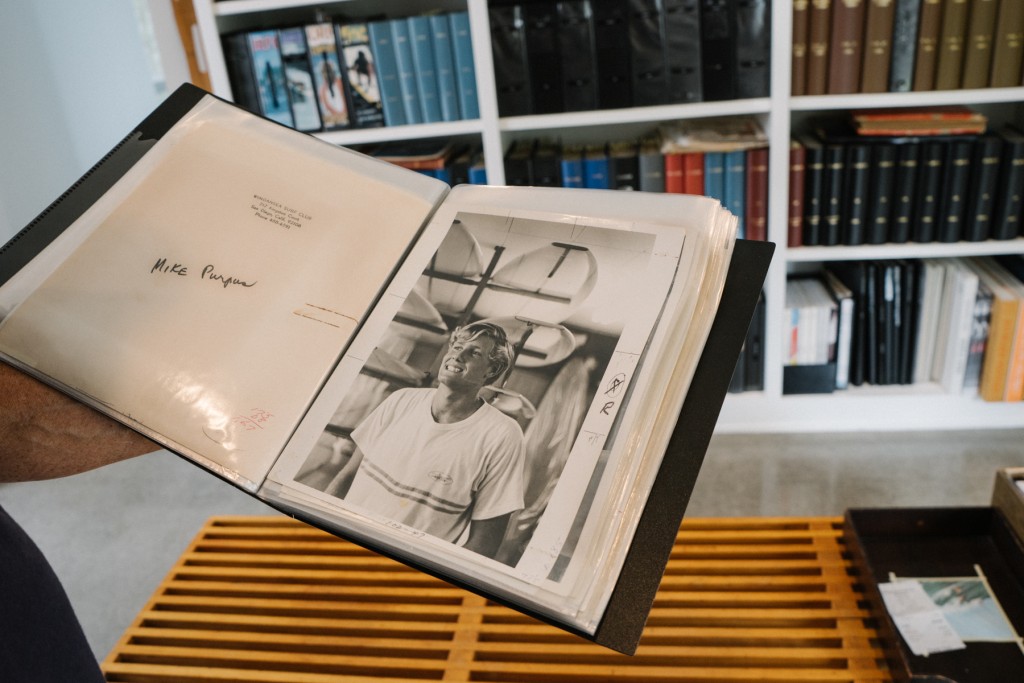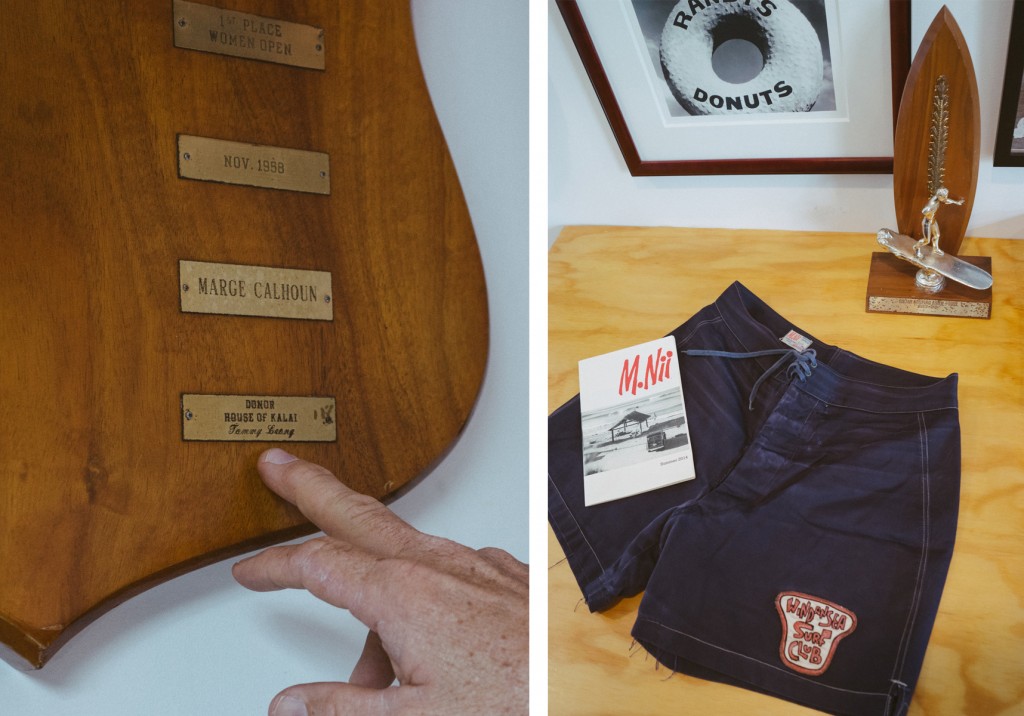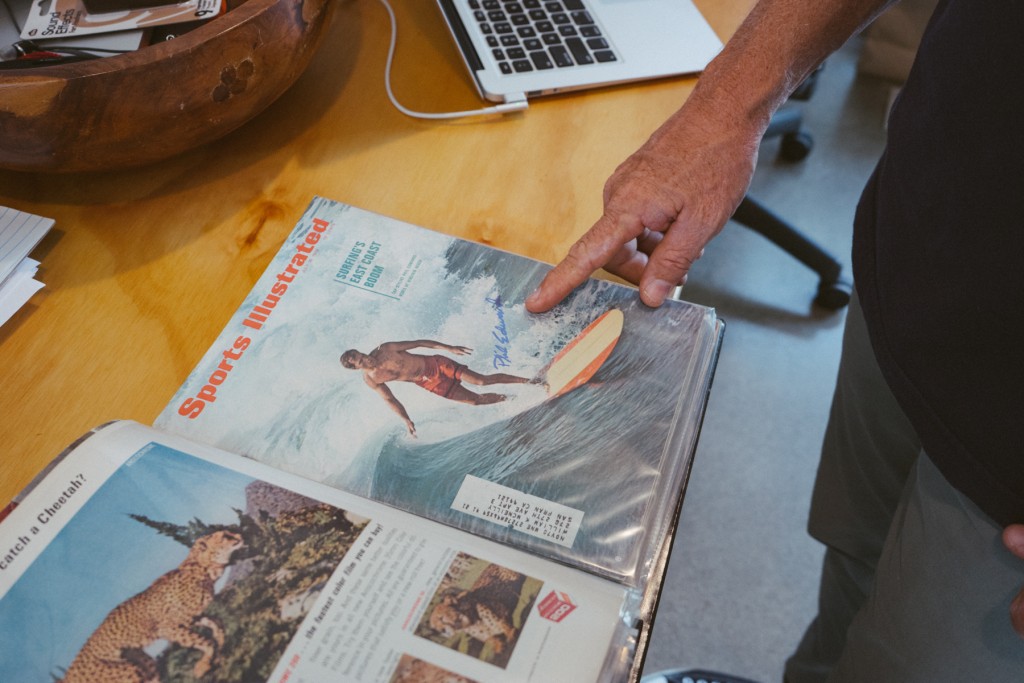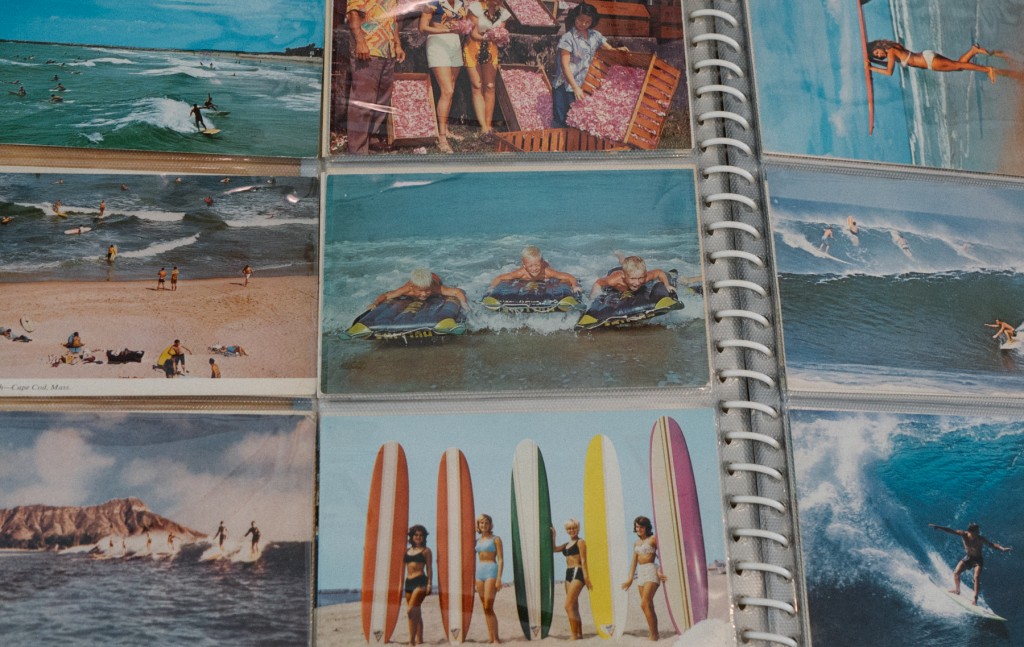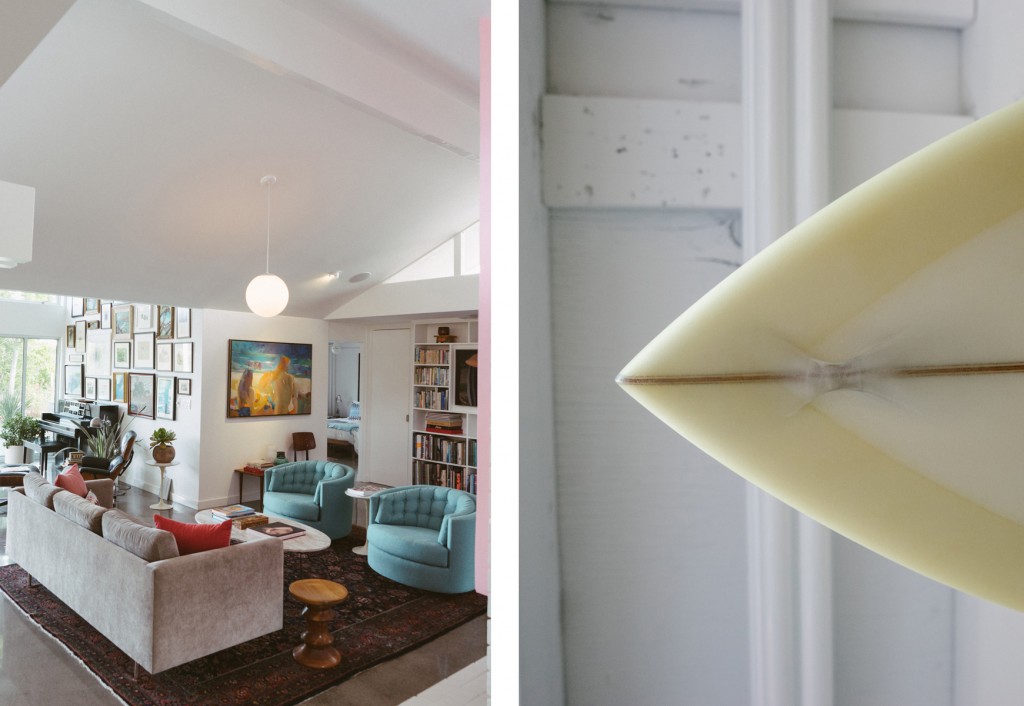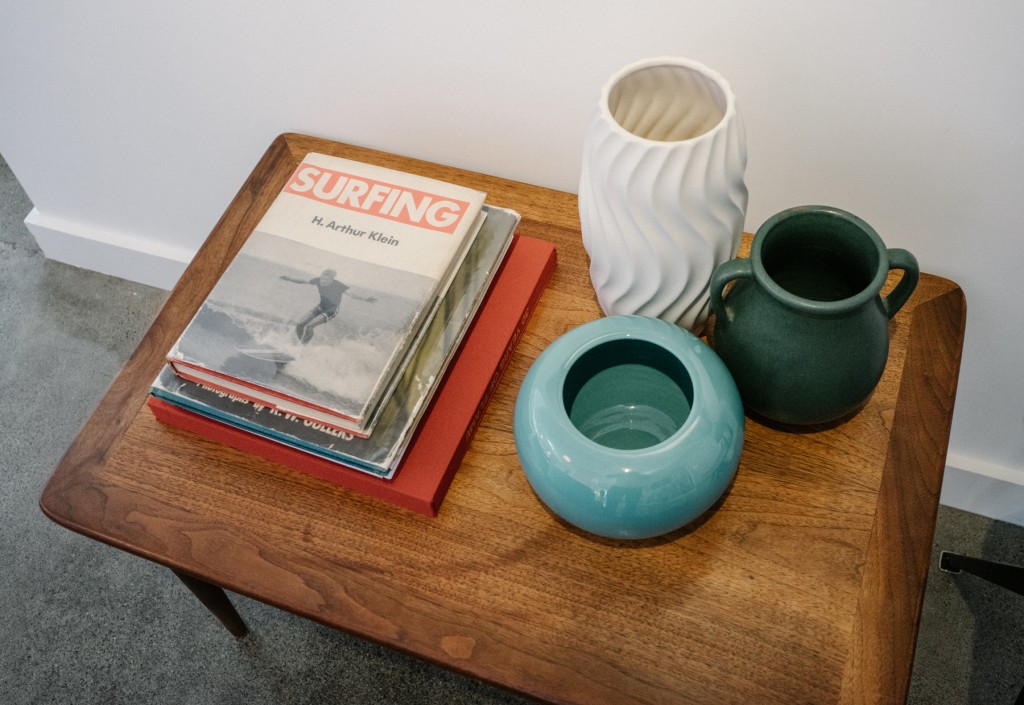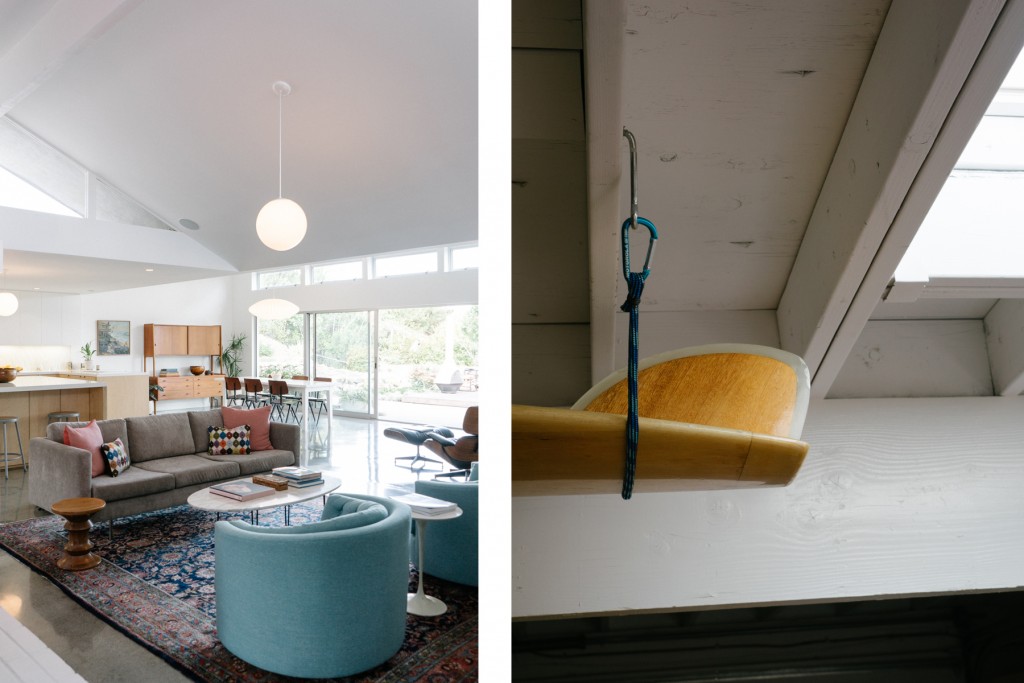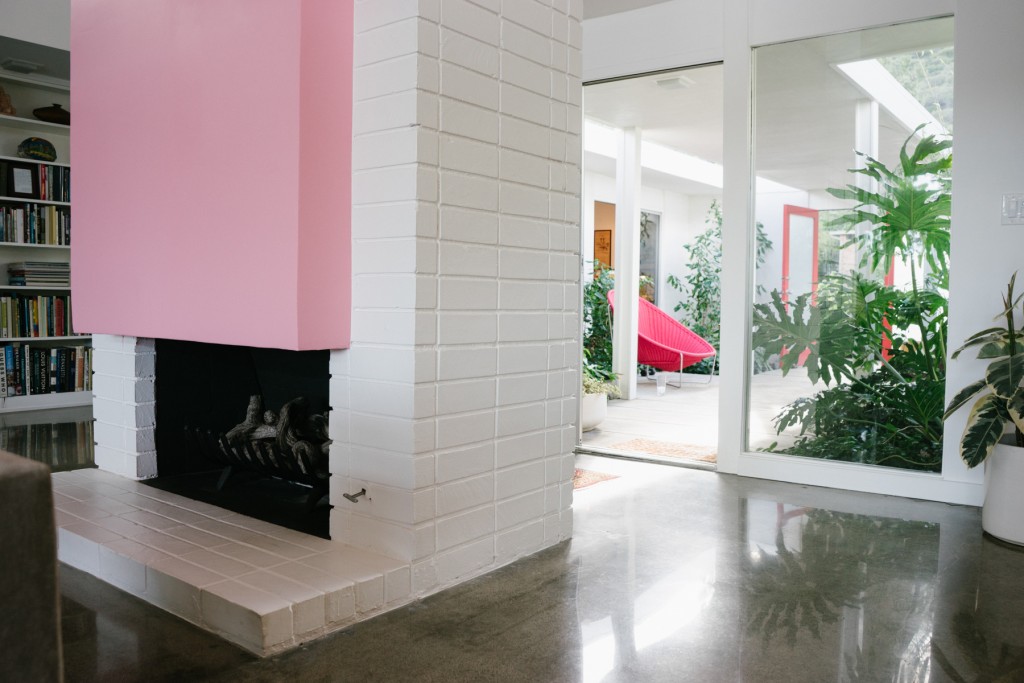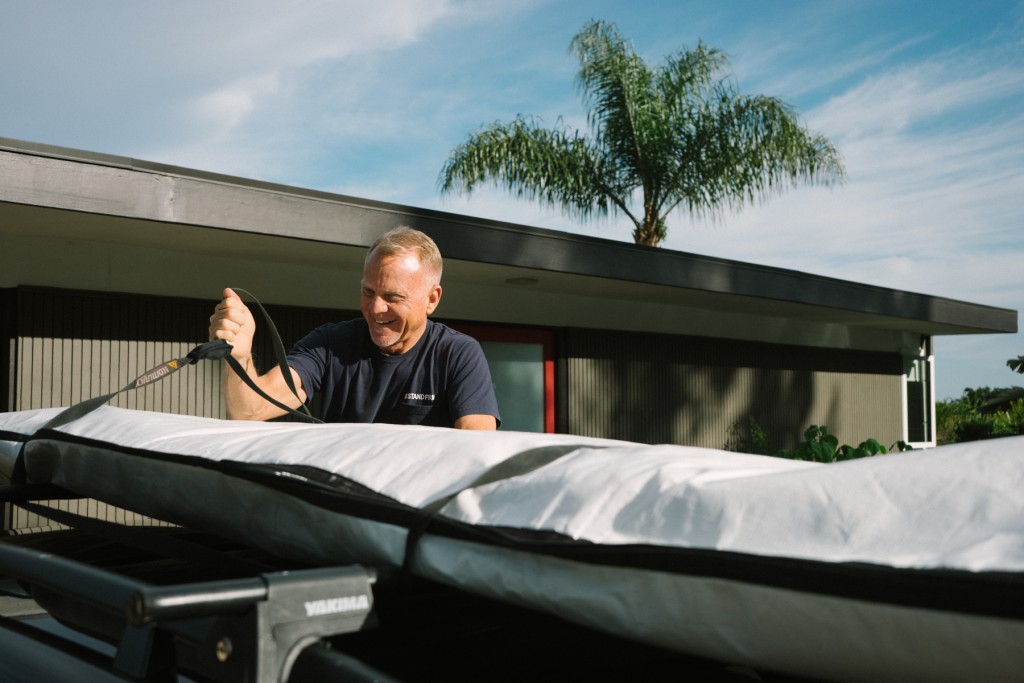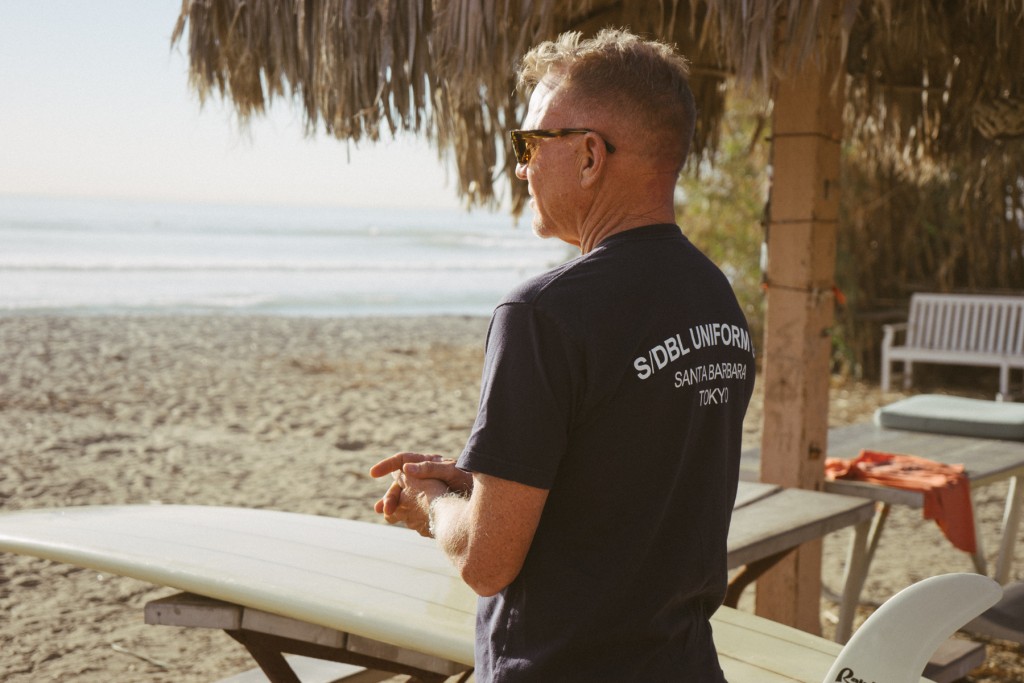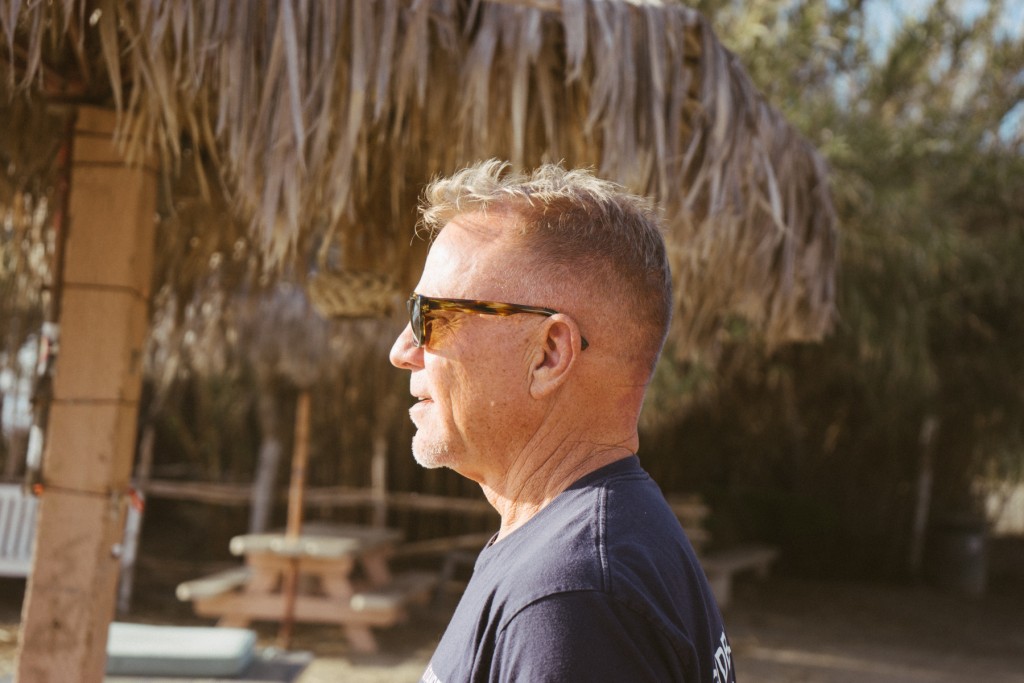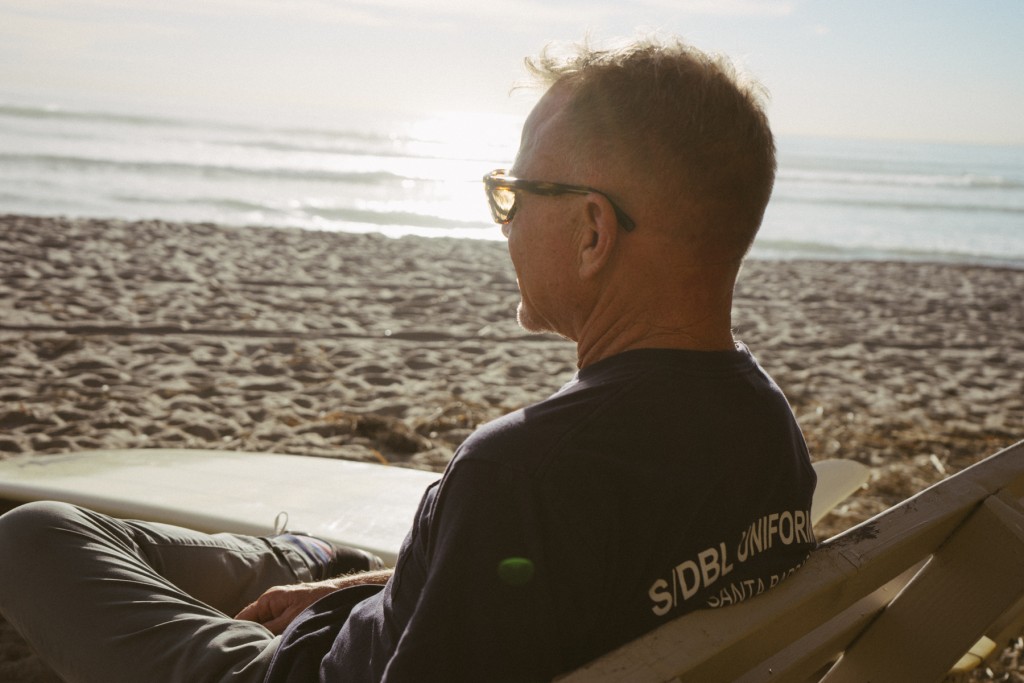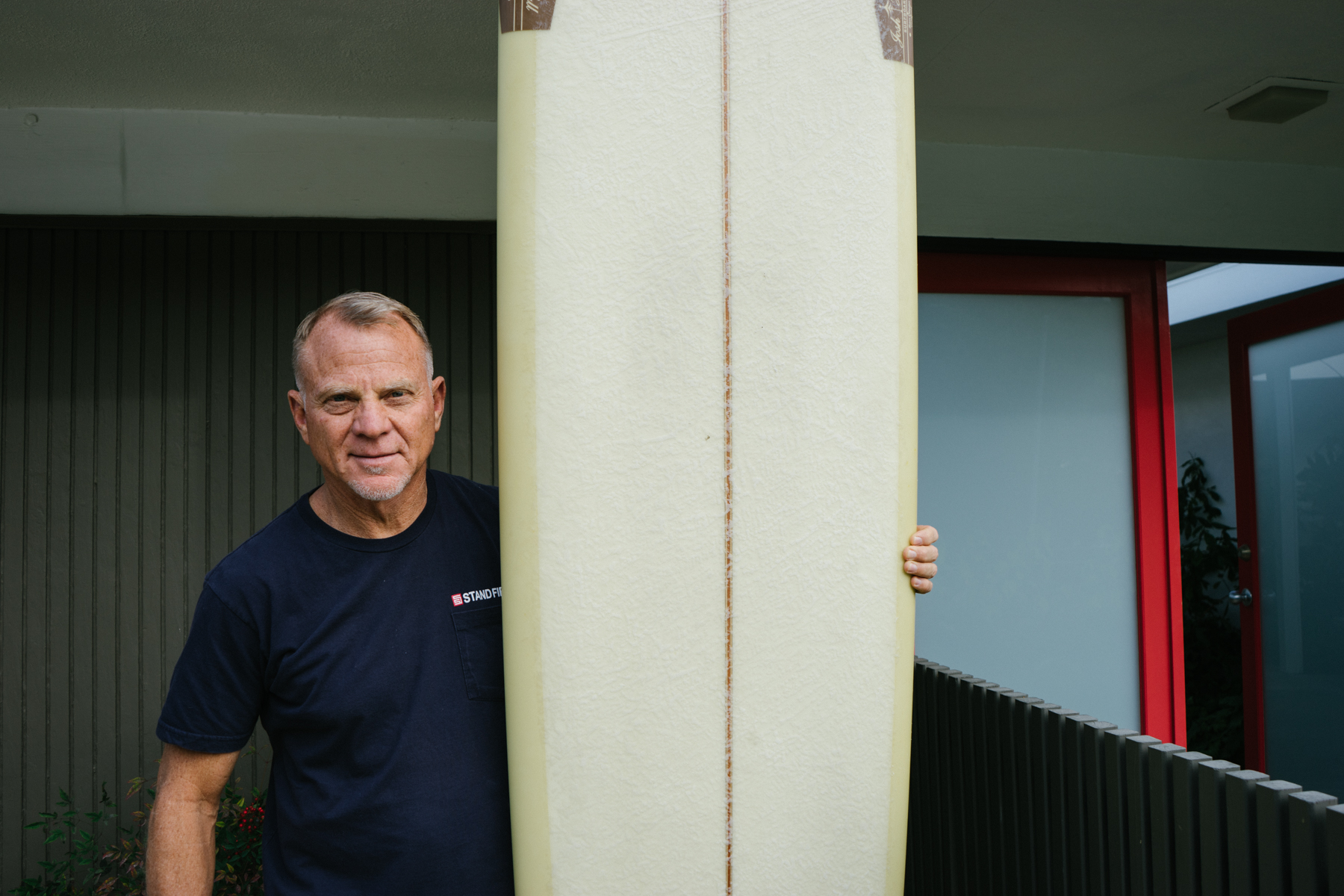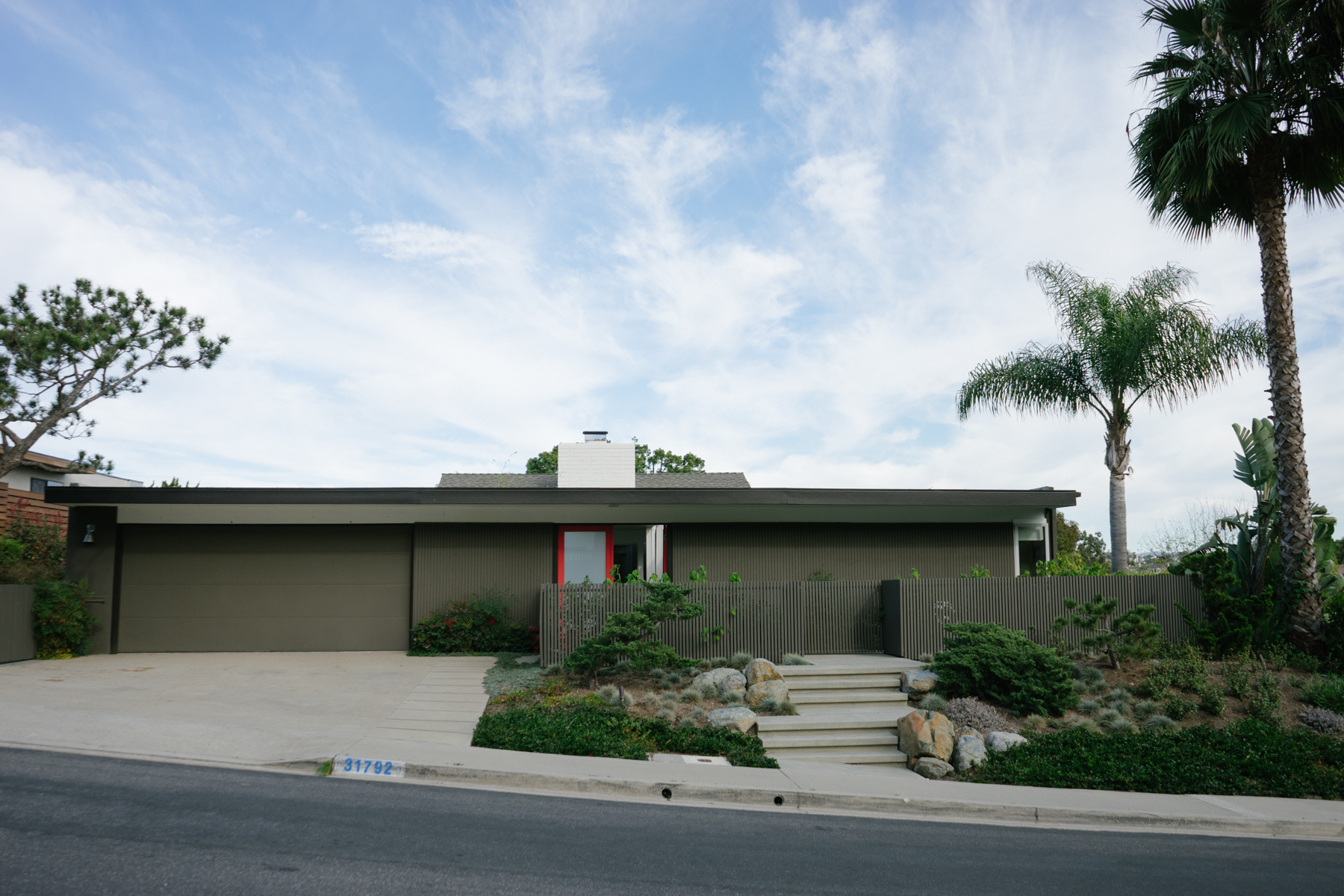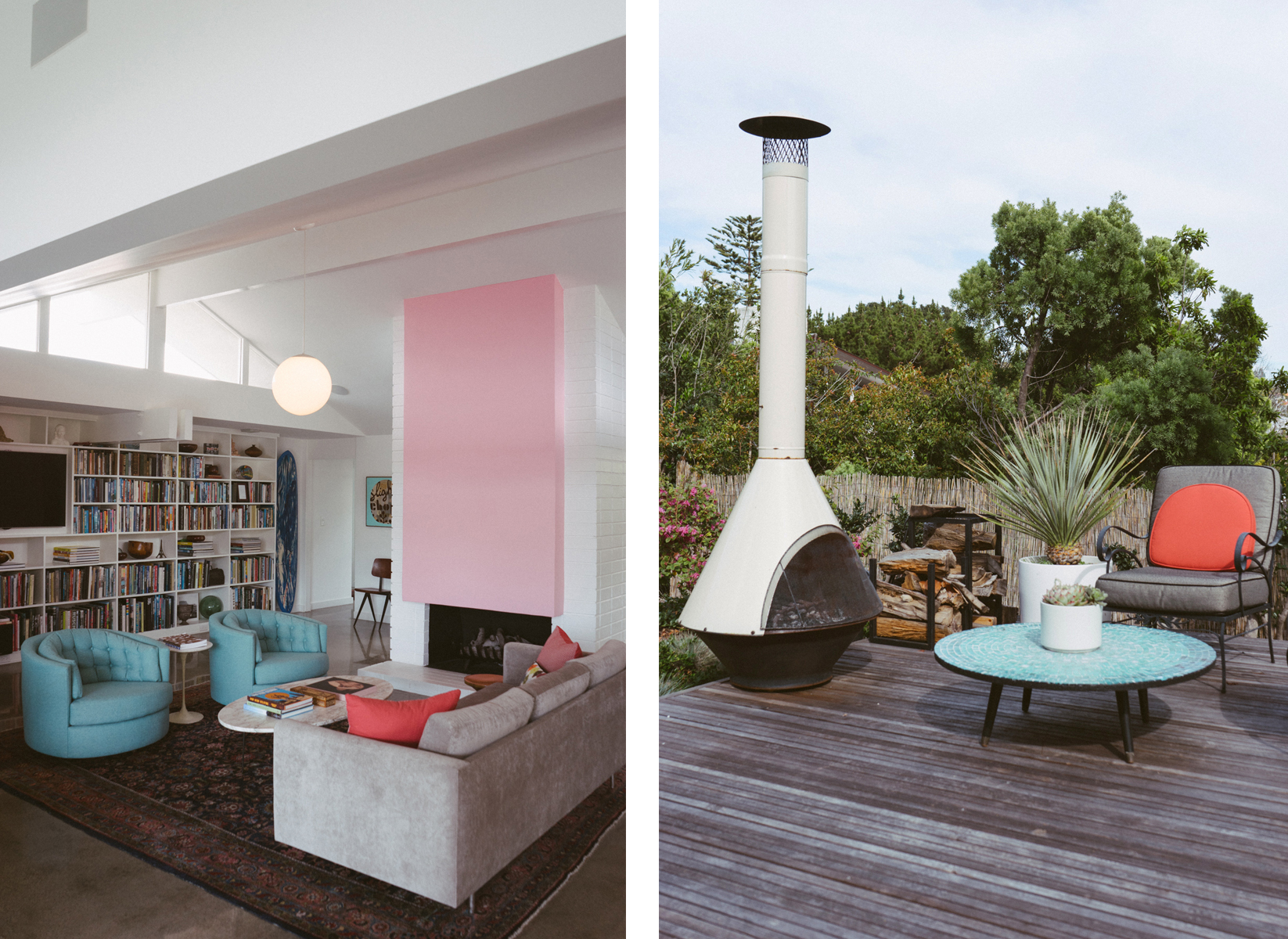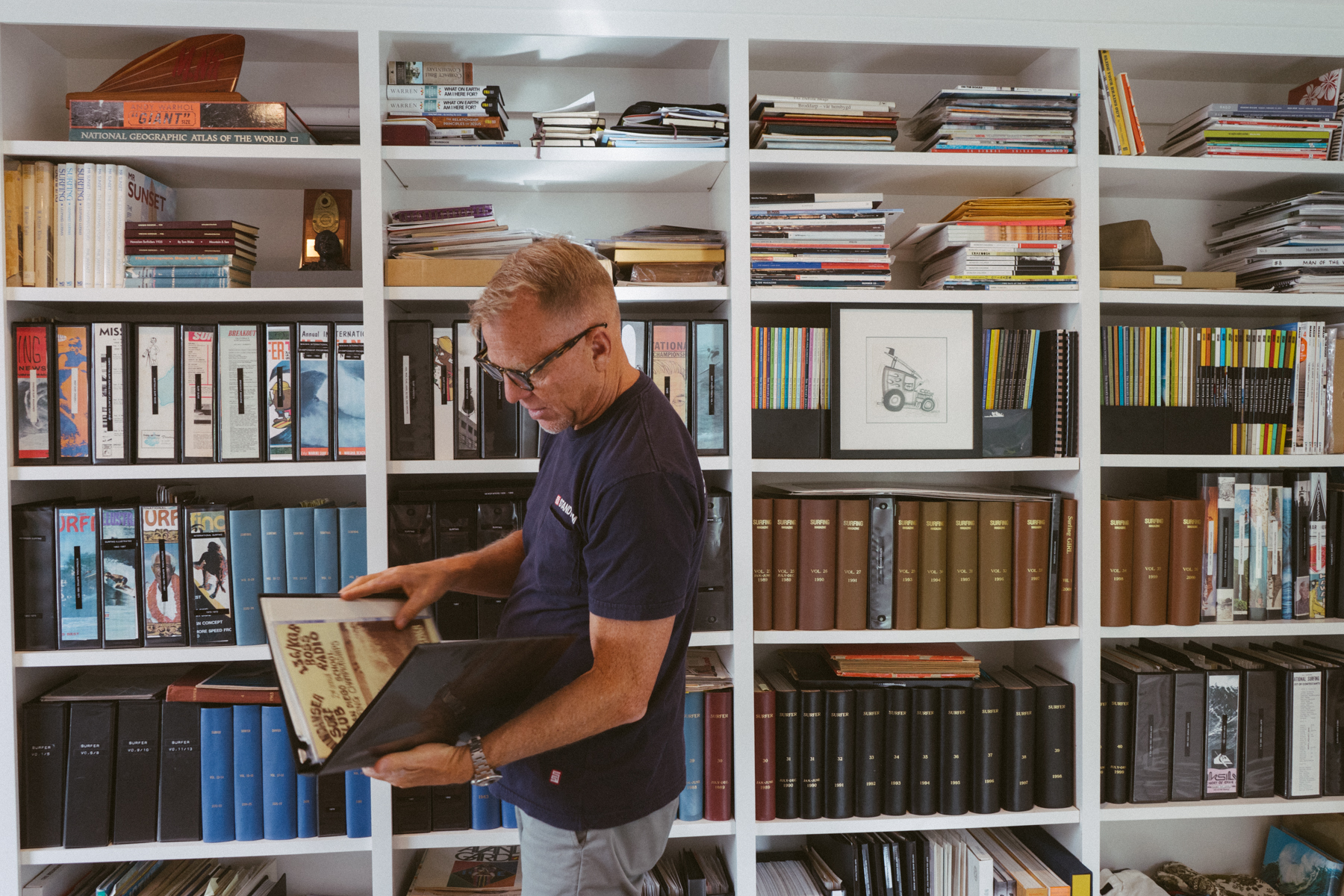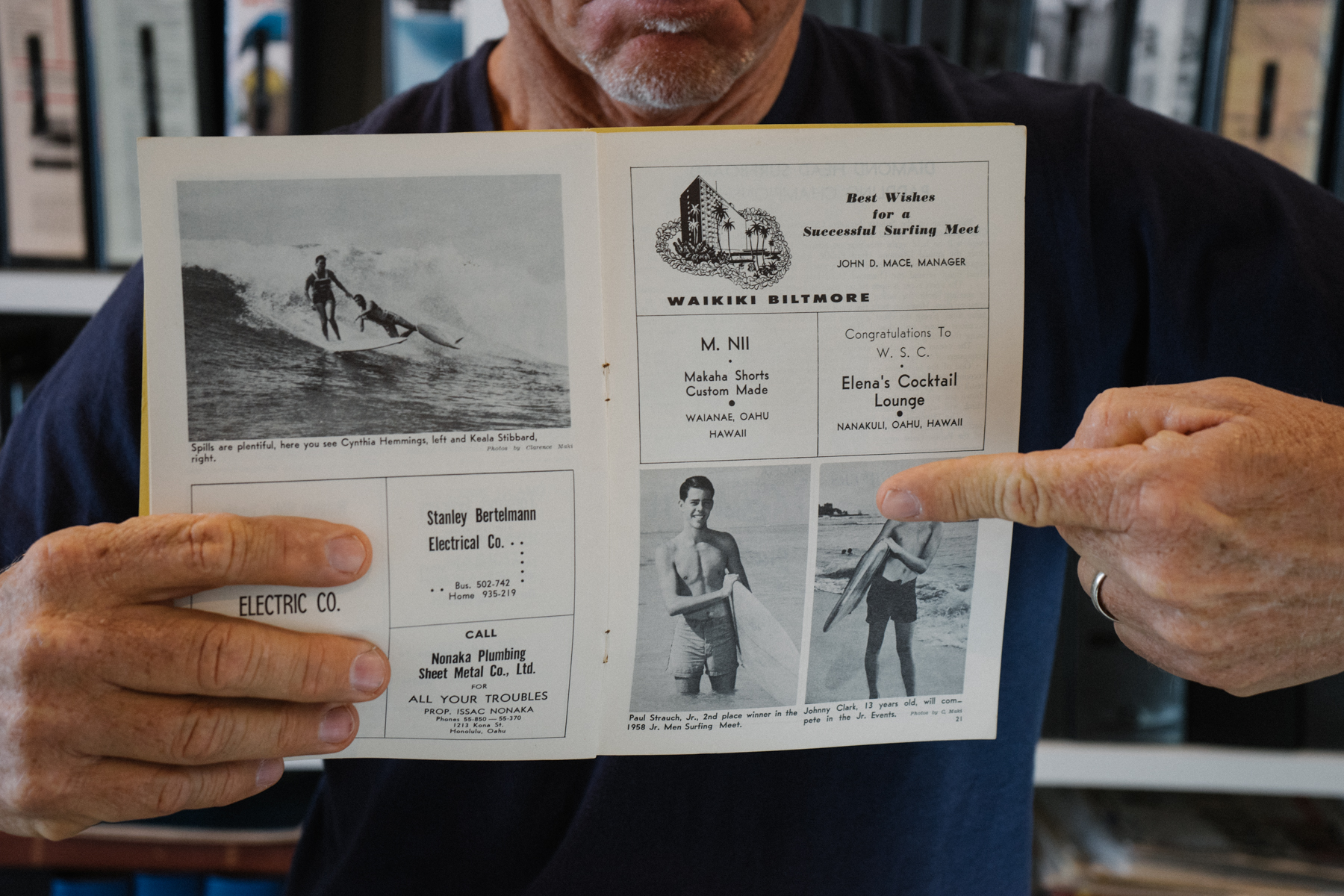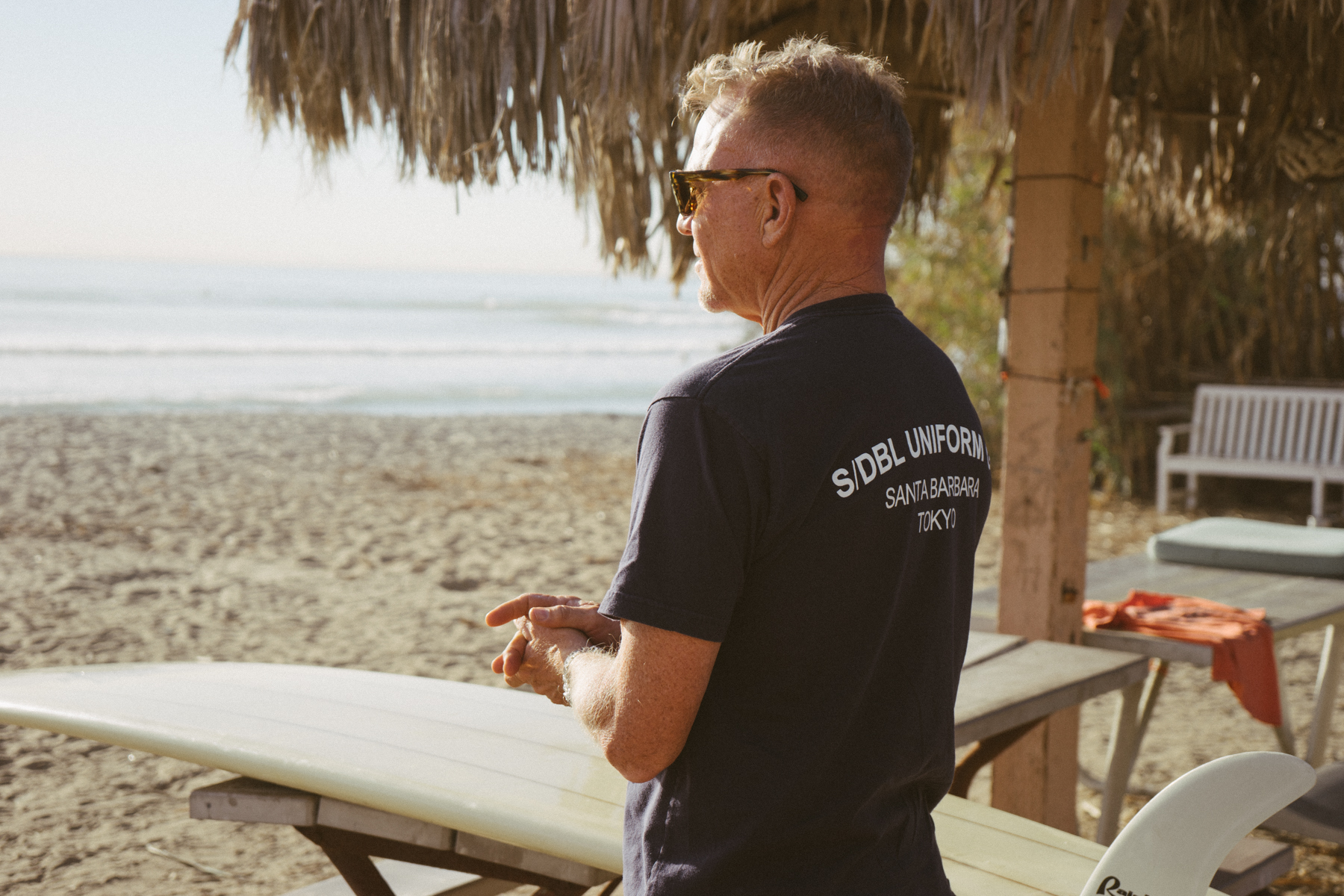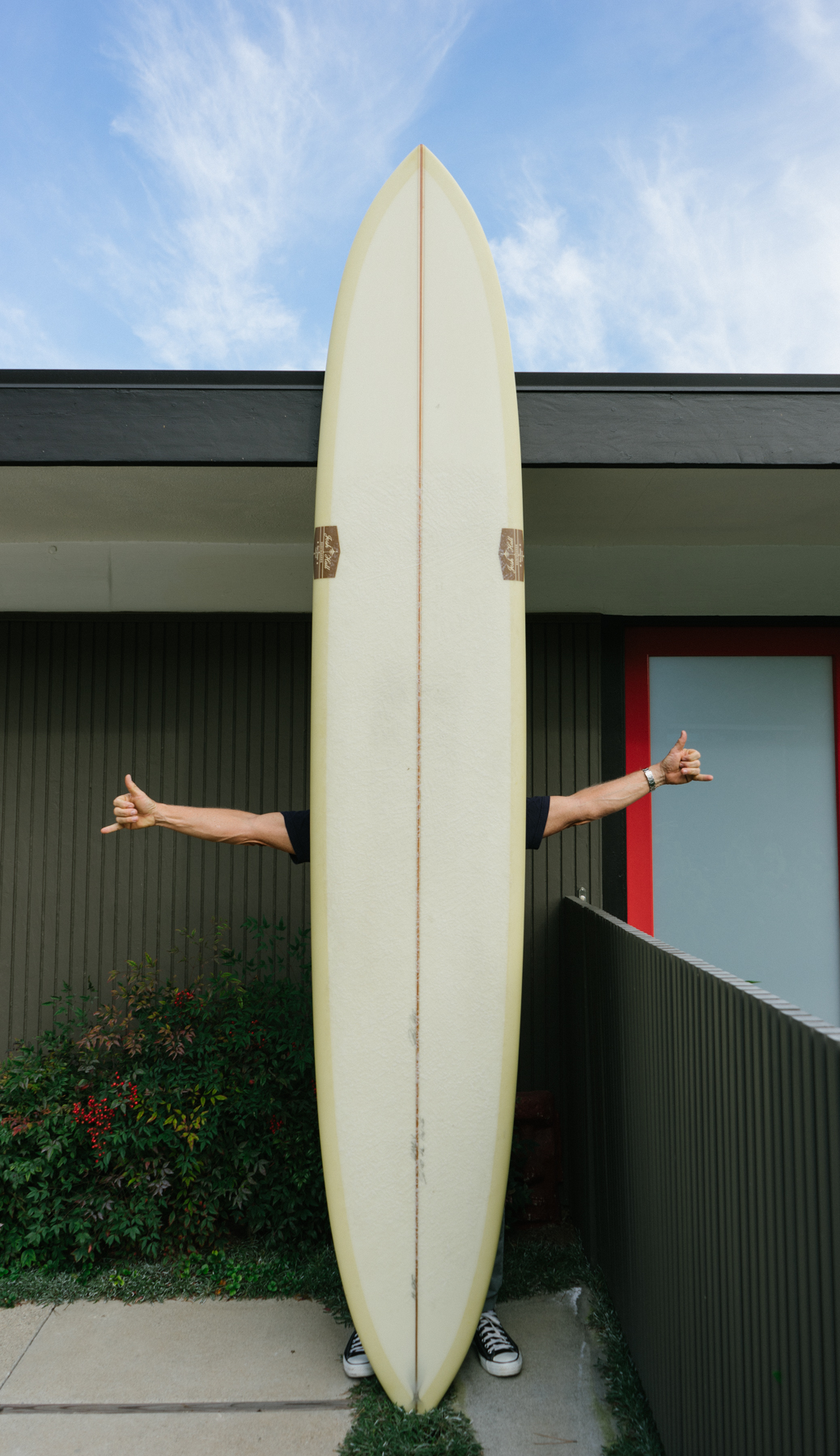What led you to start the men’s surf heritage brand, M.Nii?
M.Nii was just another step further for me in my fascination with Hawaiian culture and even the early surf industry there. The first real pro surf contest at a high level was the 1953 Makaha International Championship, which was just an informal and organized group. The sport of surfing didn’t have an official organization, but surfers started coming from around the world to attend it and it was organized by legends that included George Downing, Duke Kahanamoku, Wally Froiseth and Rabbit Kekai. Makaha was the big wave spot at the time, people didn’t even think there was big surf in California then because it was all Southern California based summertime surf. Winter surf in Makaha became the epicenter of surfing in the 50s. They would have this printed program for the event which was an 18 page booklet about the contest and it had these little goofy ads inside. Those were arguably the first official magazines on surfing. The Tom Blake book was out, but in terms of a zine format, these were the first surf mags. So I started collecting them and studying them.
I saw an ad in one of them that was just this simple little square box ad with simple type that said, “Custom surf trunks, M.Nii tailors, Waianae.” And it just always sort of stuck with me, until I actually found a pair of the trunks at a surf swap, a longboard collectors club. I bought them for like $20 and just started asking more about them from the guys I knew that were in Makaha in the 50s. Guys like Walter Hoffman, Micky Munoz, Henry Ford, guys that were in the early Bruce Brown films. Whenever I’d ask someone, they’d always get a little twinkle in their eyes and start reminiscing like it was yesterday, it was a special time in all of their lives. Think about it, they were teenagers, it was probably their first trip to Hawaii, first times living on their own, partying, first time surfing bigger waves of real consequence, probably their first times with women and having relations and whatnot. This was a period post WWII, before civil unrest, before the drug culture, before the war in Vietnam, so everyone’s happy, there was peace, the economy was healthy – especially in Hawaii with the tourism, the Navy base, all the vintage and salvage there.
Some of the surfers coming over from California were buying up the Navy salvaged chinos and converting those into boardshorts because they were more heavy duty than their trunks from California that kept getting blown out in the heavier Hawaiian surf. They were like Catalina cotton shorts that were really built for pool wear or lounge wear, not for technical surfing. They bought the military surplus shorts because they wouldn’t blow out, but they had pockets and stuff so they’d take them to the tailor shop to modify them for surfing. Eventually the tailor just started offering the guys to make custom shorts for them (instead of the alterations) for $4 a pop. The surplus shorts were only a quarter so $4 at that time a lot to these guys, but that was the beginning of arguably the first boardshorts ever made specifically for surfing. Then what happened was these guys would bring them home and they became like a badge of honor that people recognized as a sign that you had been to Hawaii and probably ridden Makaha. It was a brand before there were (surf) brands.
So after hearing all that, I did some more research and got in touch with the family who was first making these custom surf trunks, I got the trademark to re-make the shorts and the rest is history. We tried to stay as true as possible to the original brand and the construction of the shorts as possible though, which is where I give my partner John Moore all the credit. He was really able to mimic the construction quality, the wash, the finish, and the overall vibe.
I get really excited about all the history behind it. I was interviewing Greg Noll for instance and he talks about his first black and white pair of jailhouse striped shorts that were actually made by M.Nii. I asked him, “Why did you have them made black and white striped?” He told me that in those early days at Waimea, Bud Brown would be filming from the beach, you know; long lens, grainy film, kinda out of focus. When he’d go in town every day and get the film developed, he’d come back each night and have a little movie screening of the footage. All the guys would be sitting around stoked and screaming “that’s me!” and claiming each shot and arguing over who was who in the footage. So Greg, being the ultimate self promoter that he was, decided, “Screw that, I’m gonna make sure everyone knows who I am and no one can claim my waves.” So he went to the M.Nii shop and ordered a pair of the trunks in black and white stripes because he liked Elvis Presley in Jailhouse Rock. He wanted shorts that looked like that because that was like the cool movie at the time and Elvis was a rock star. He wanted to look like that and he knew they’d look rad and stand out visibly from a distance. So that’s where his iconic striped, jailhouse board short print came from.
Later all the shops and surf scene in Hawaii migrated from Makaha to the North Shore and the M.Nii shop just sort of withered away as new surf brands began to surface. Later iterations of the Greg Noll jailhouse striped shorts were made by Hang Ten, Greg’s sponsor down the road, but the original pair they were based on was made by M.Nii.

